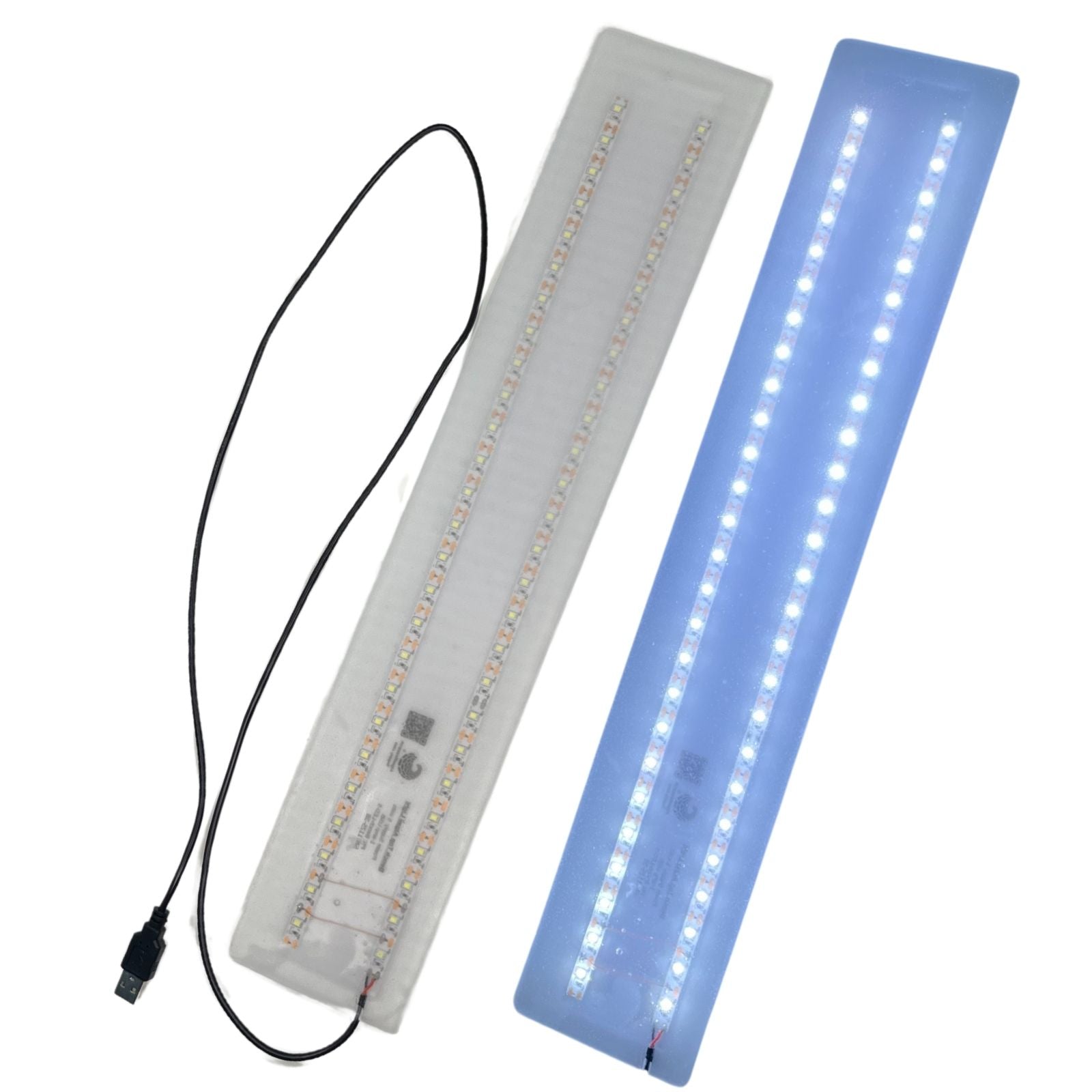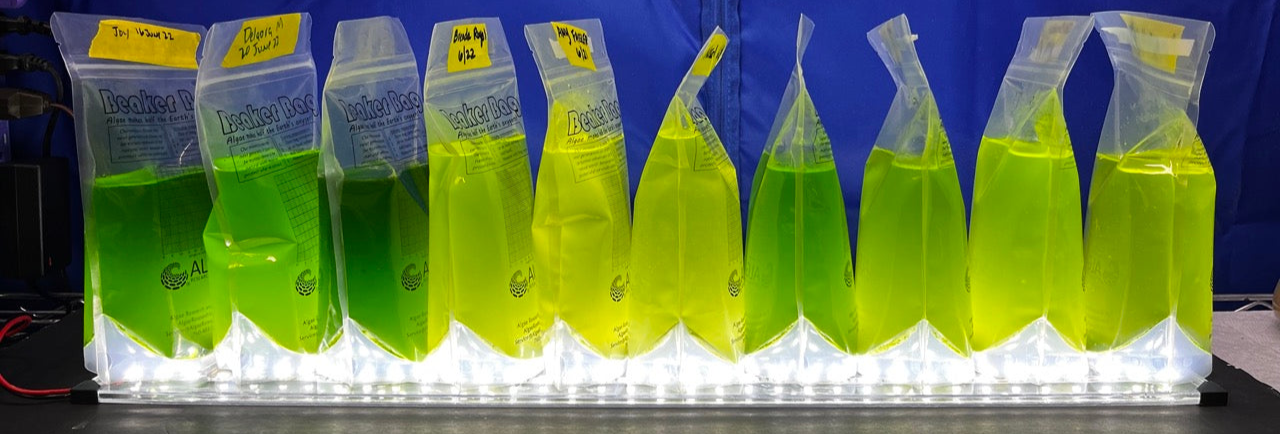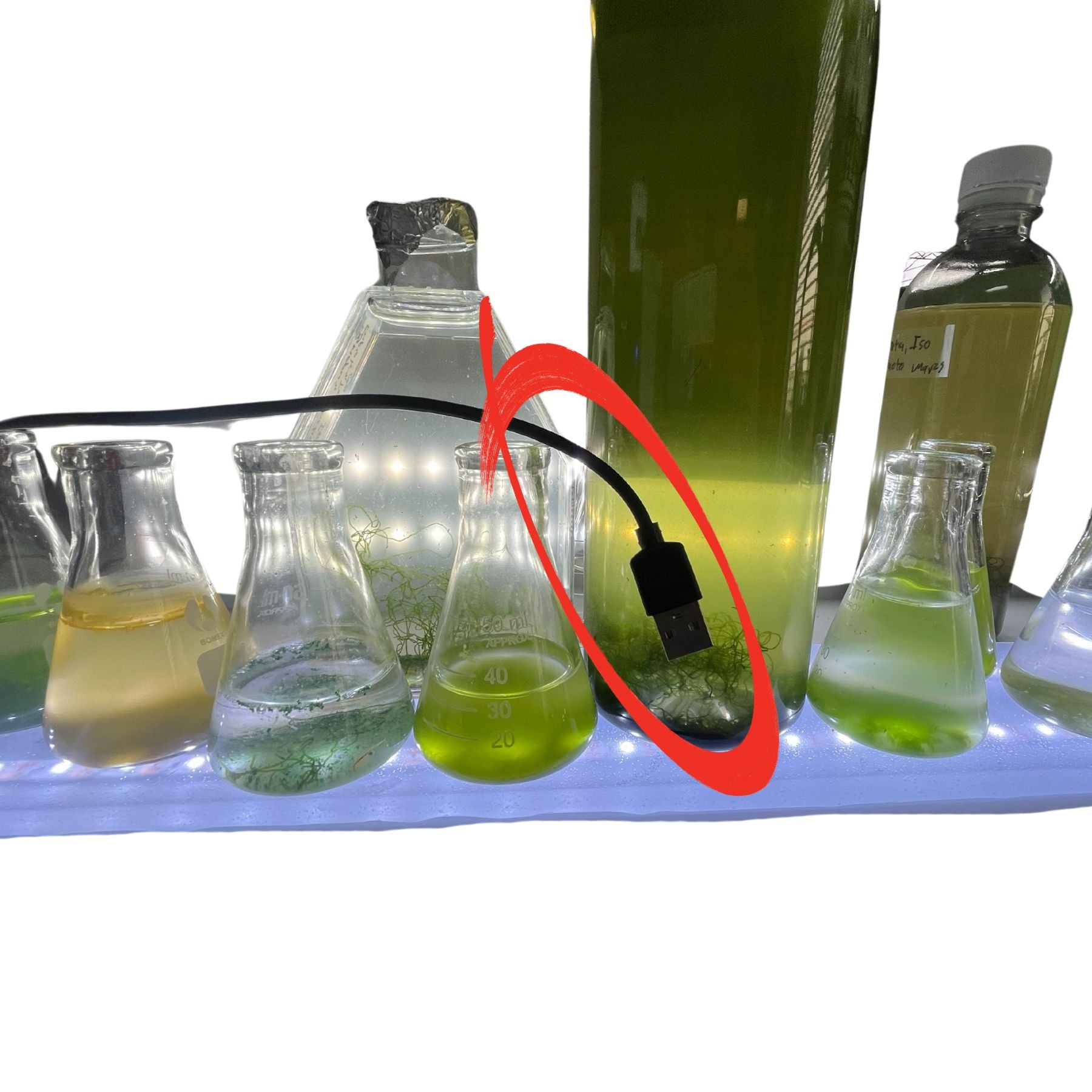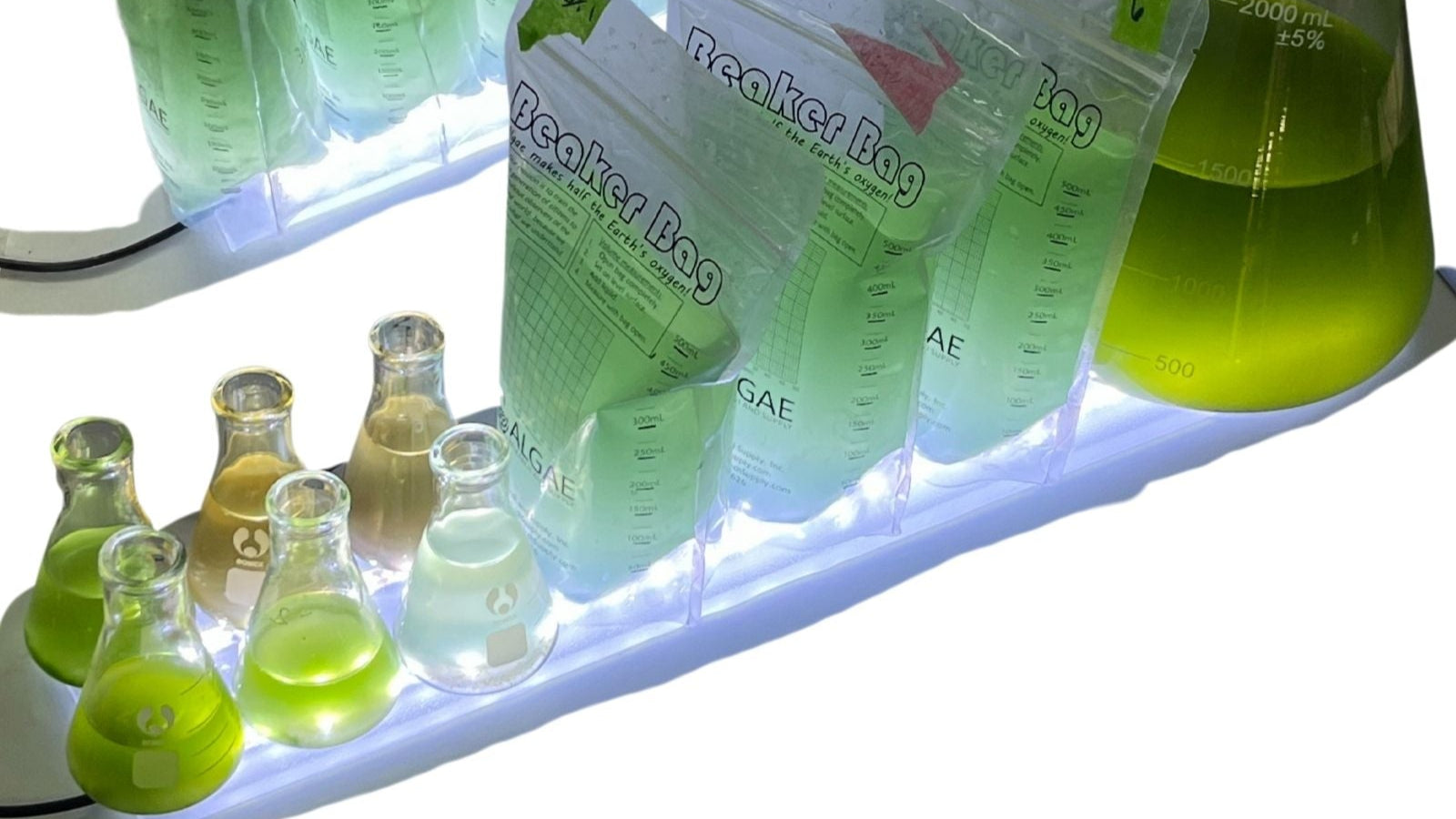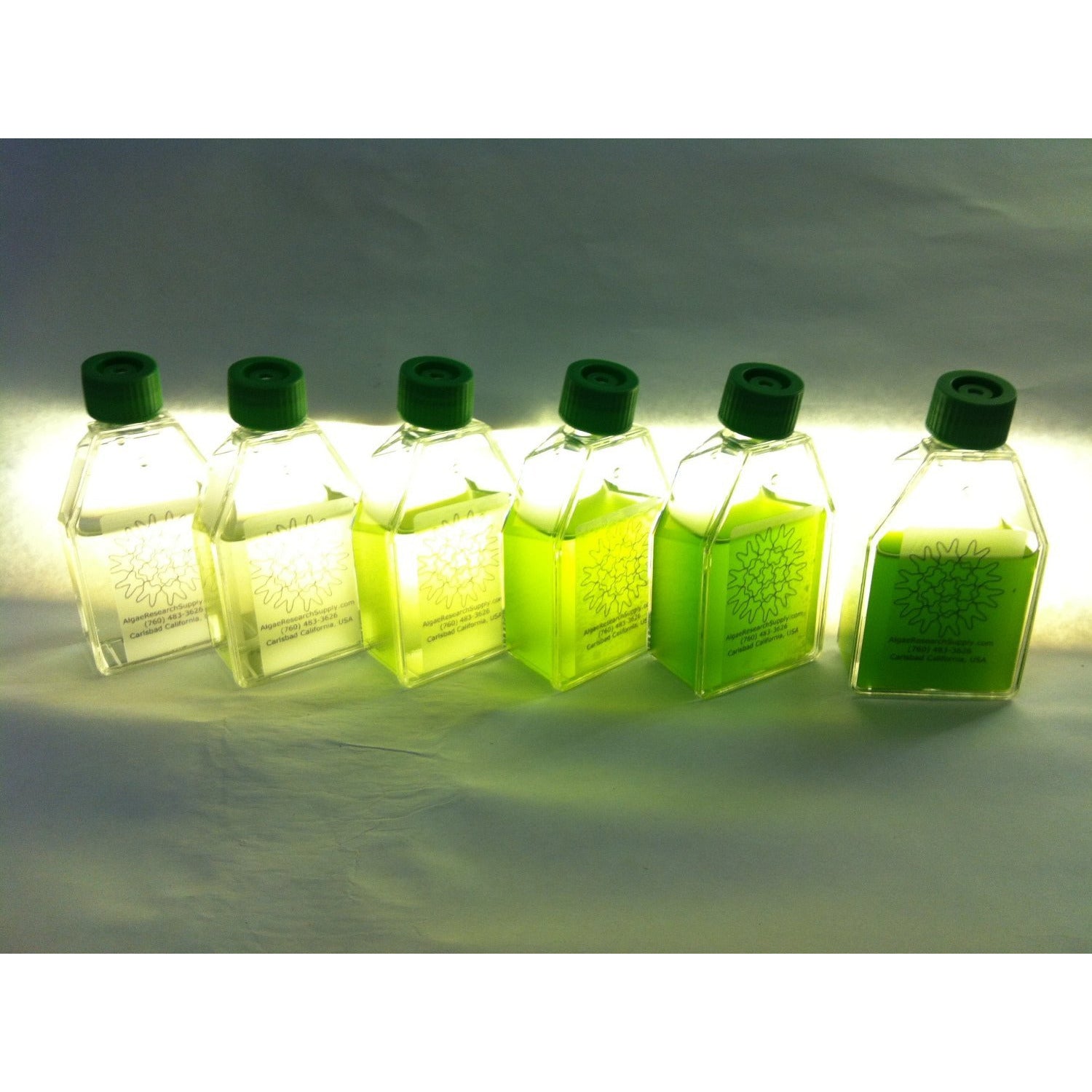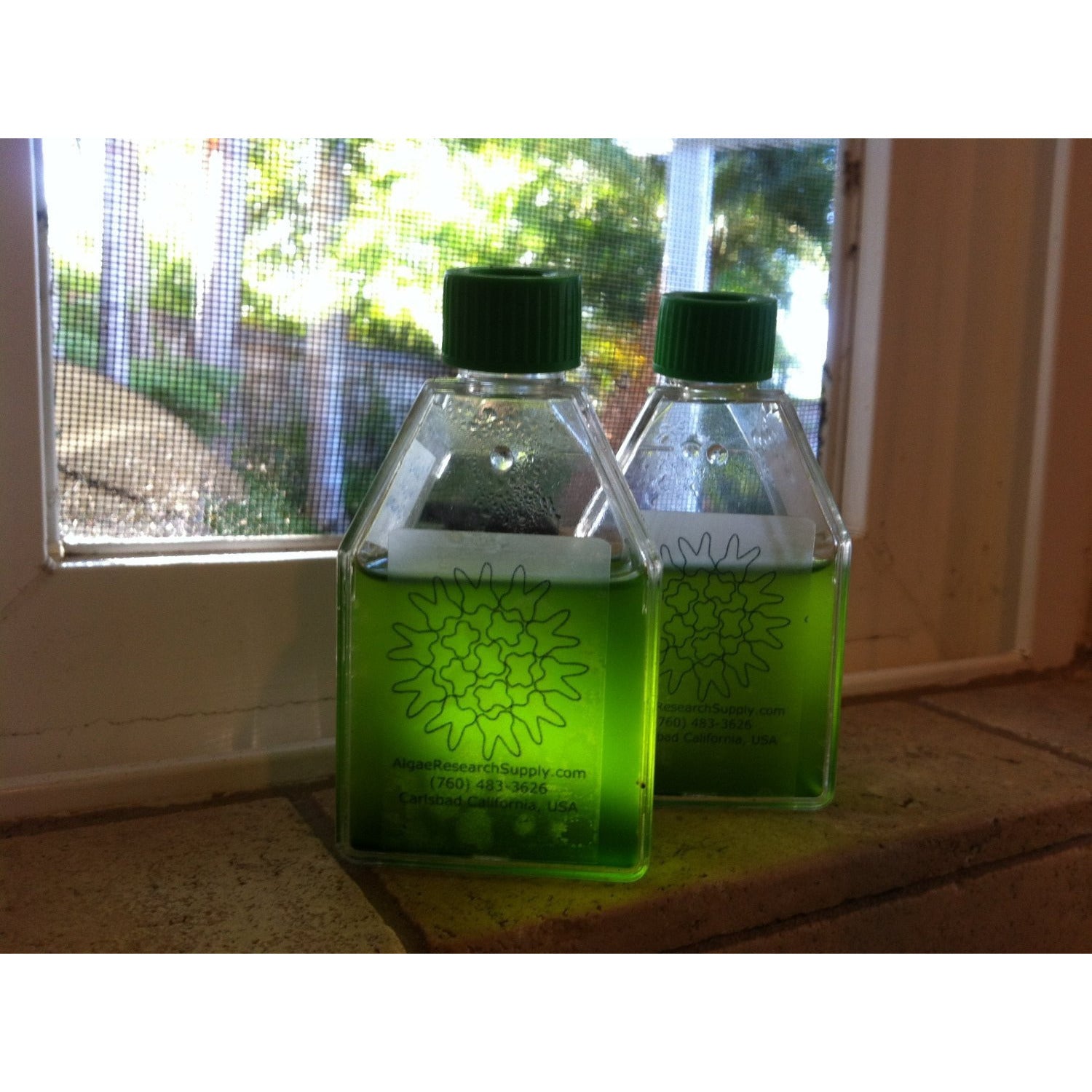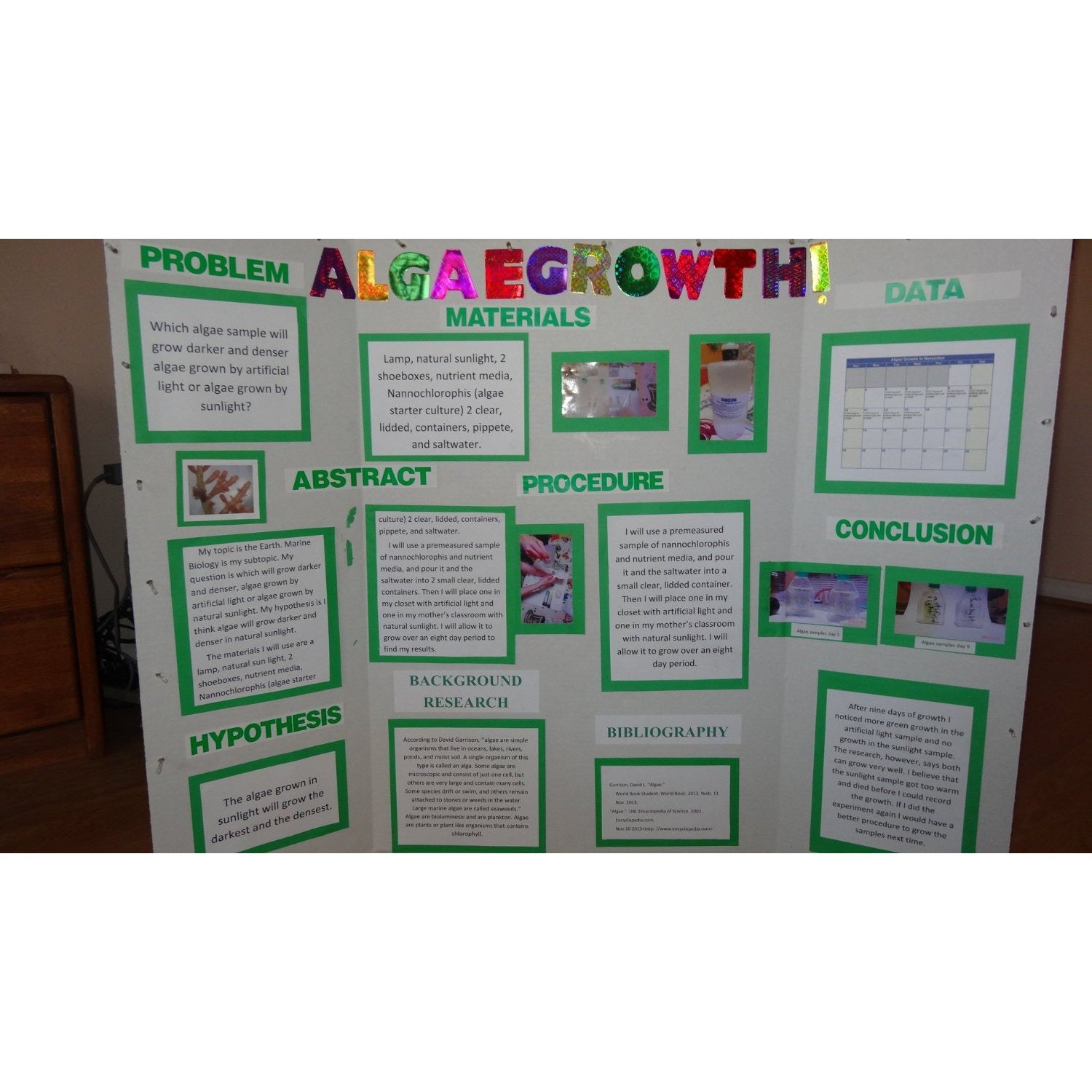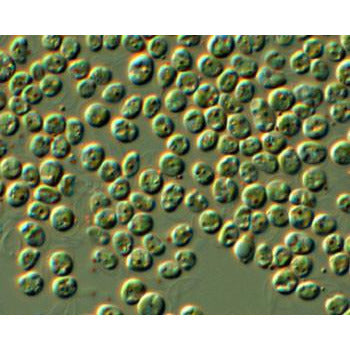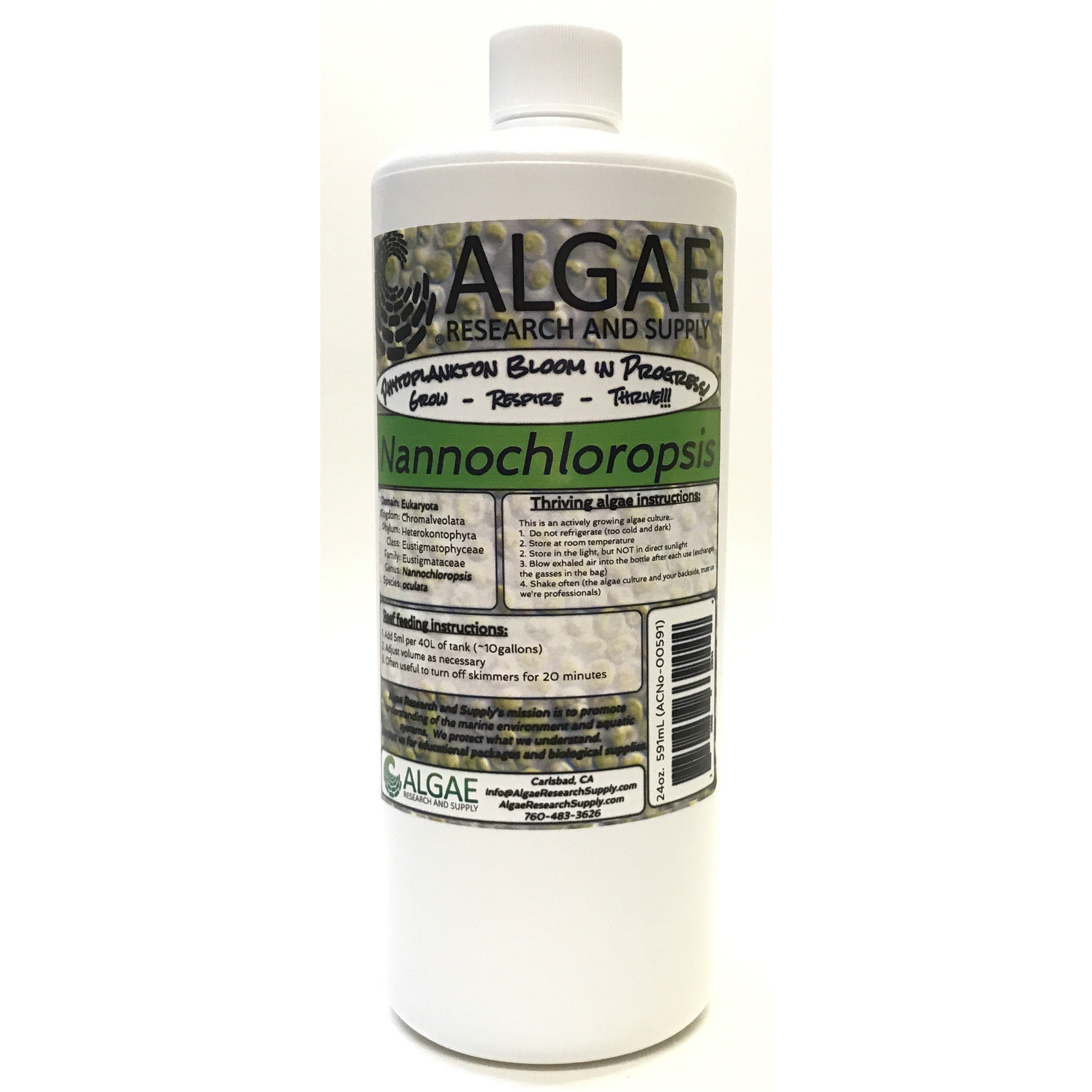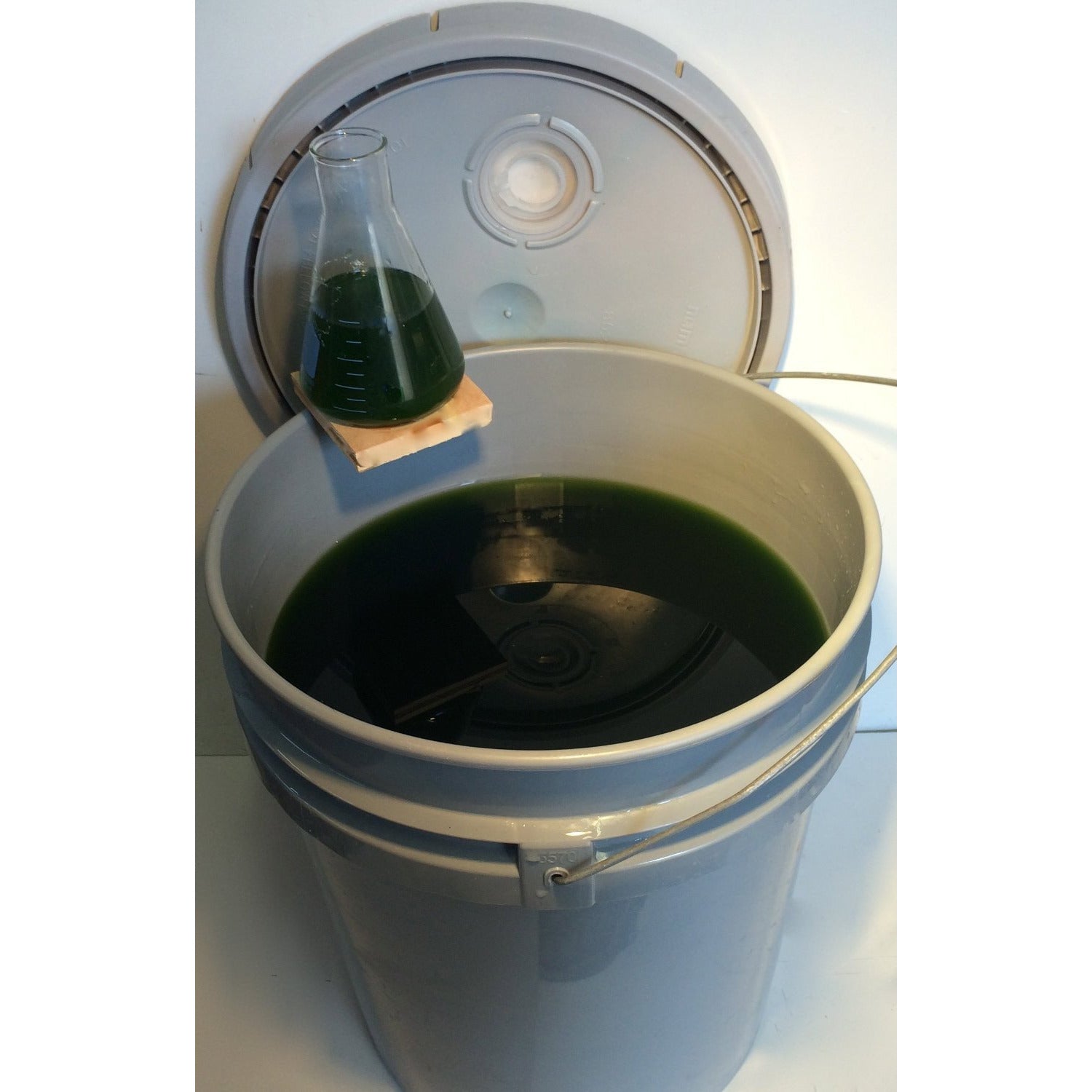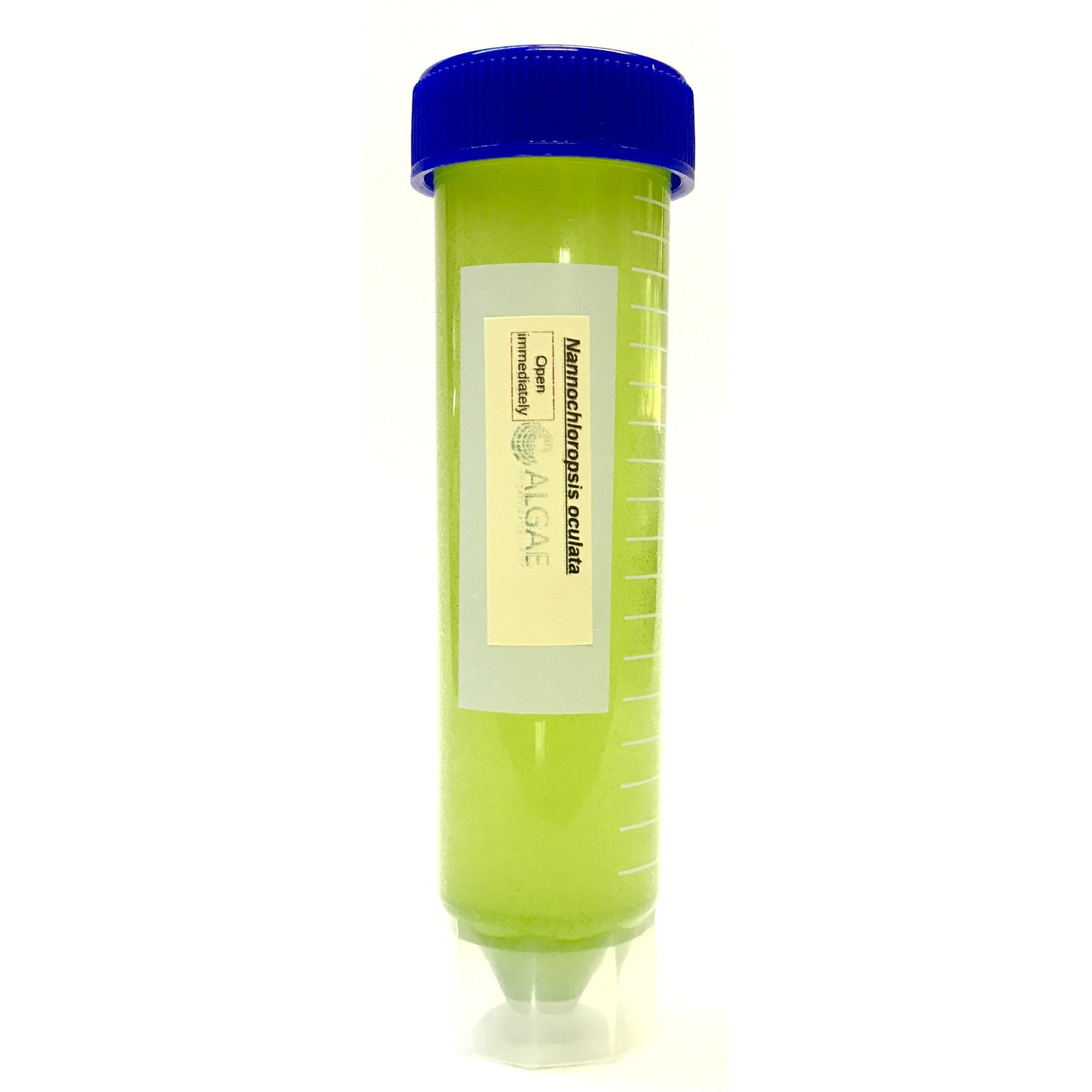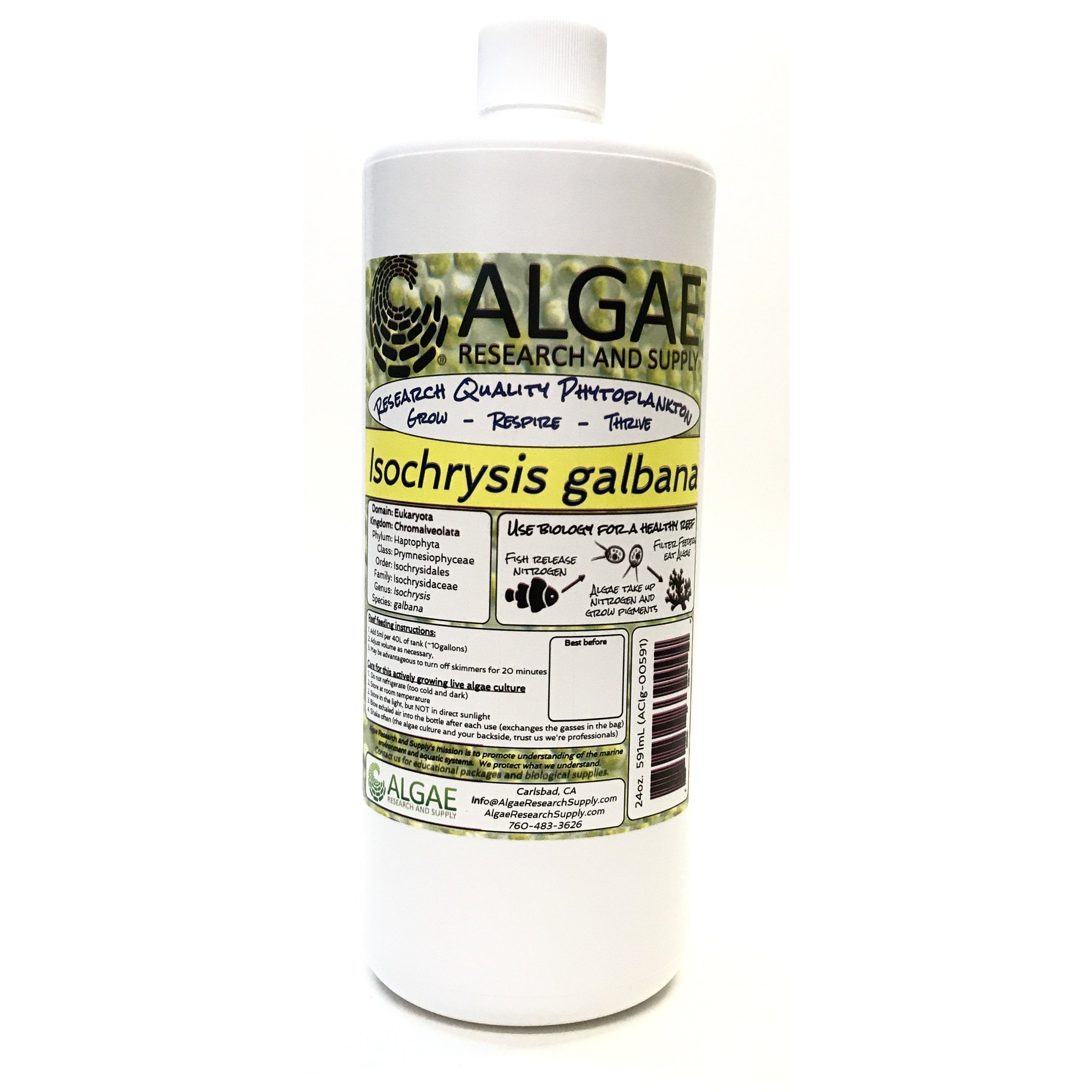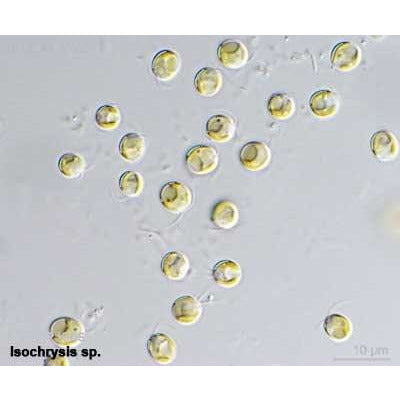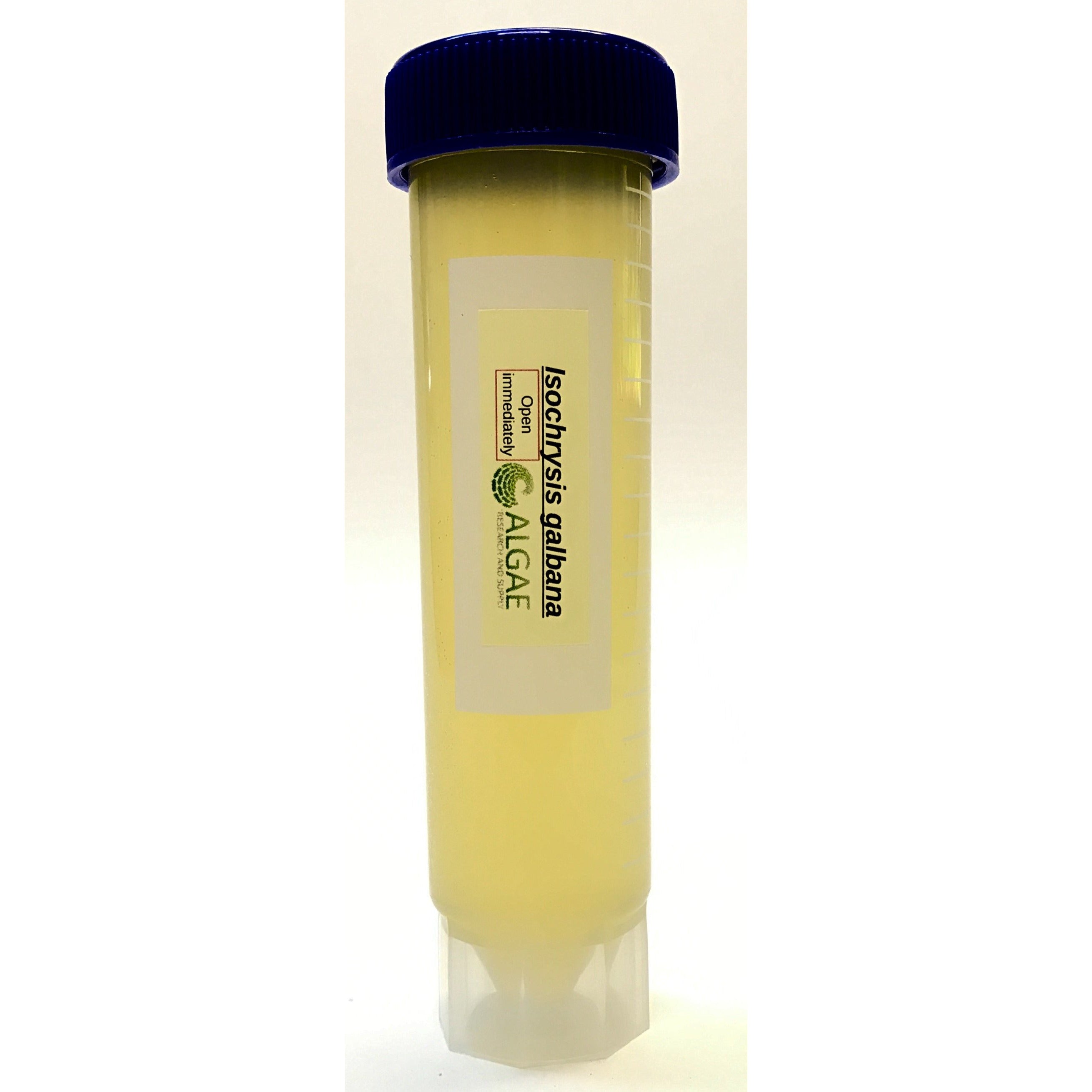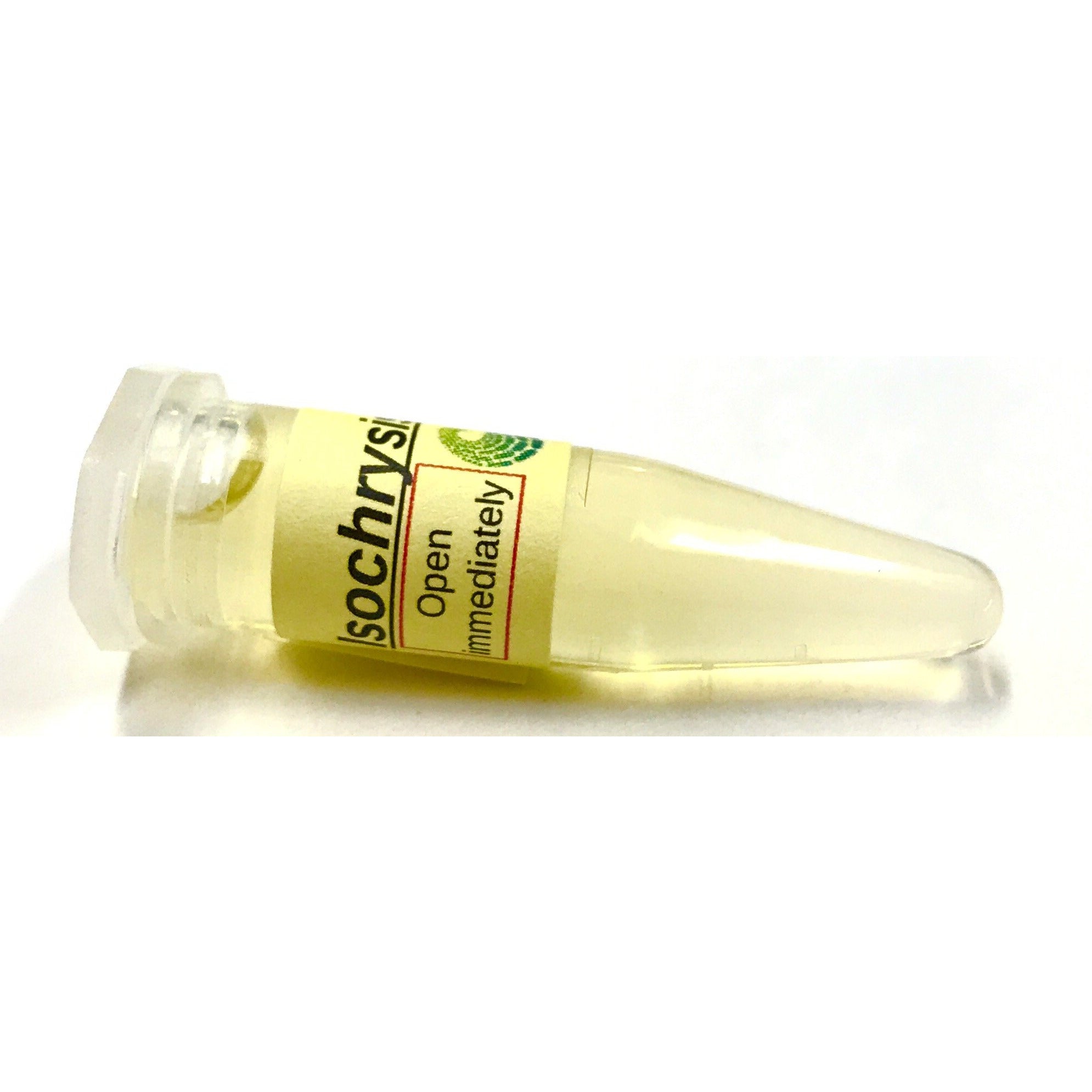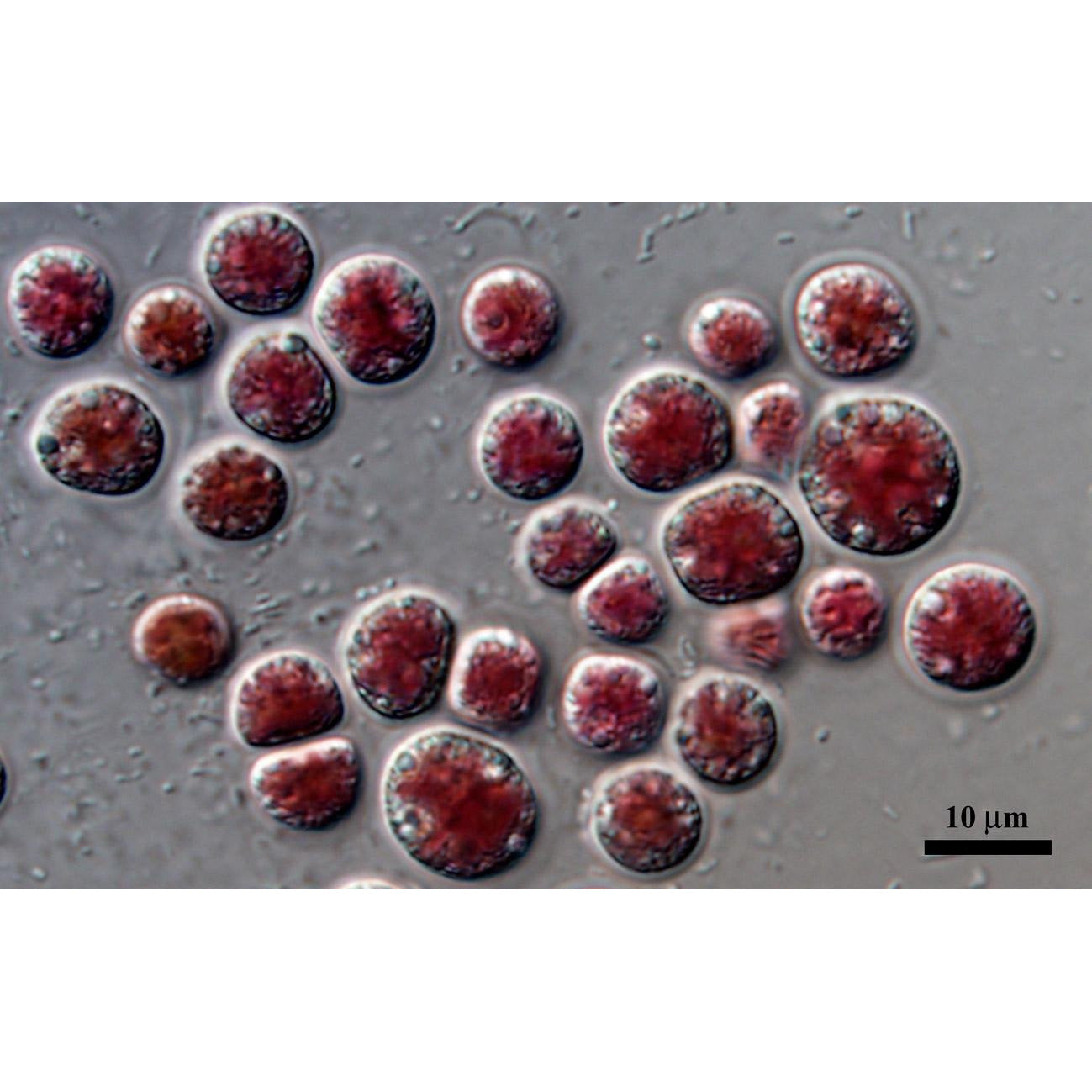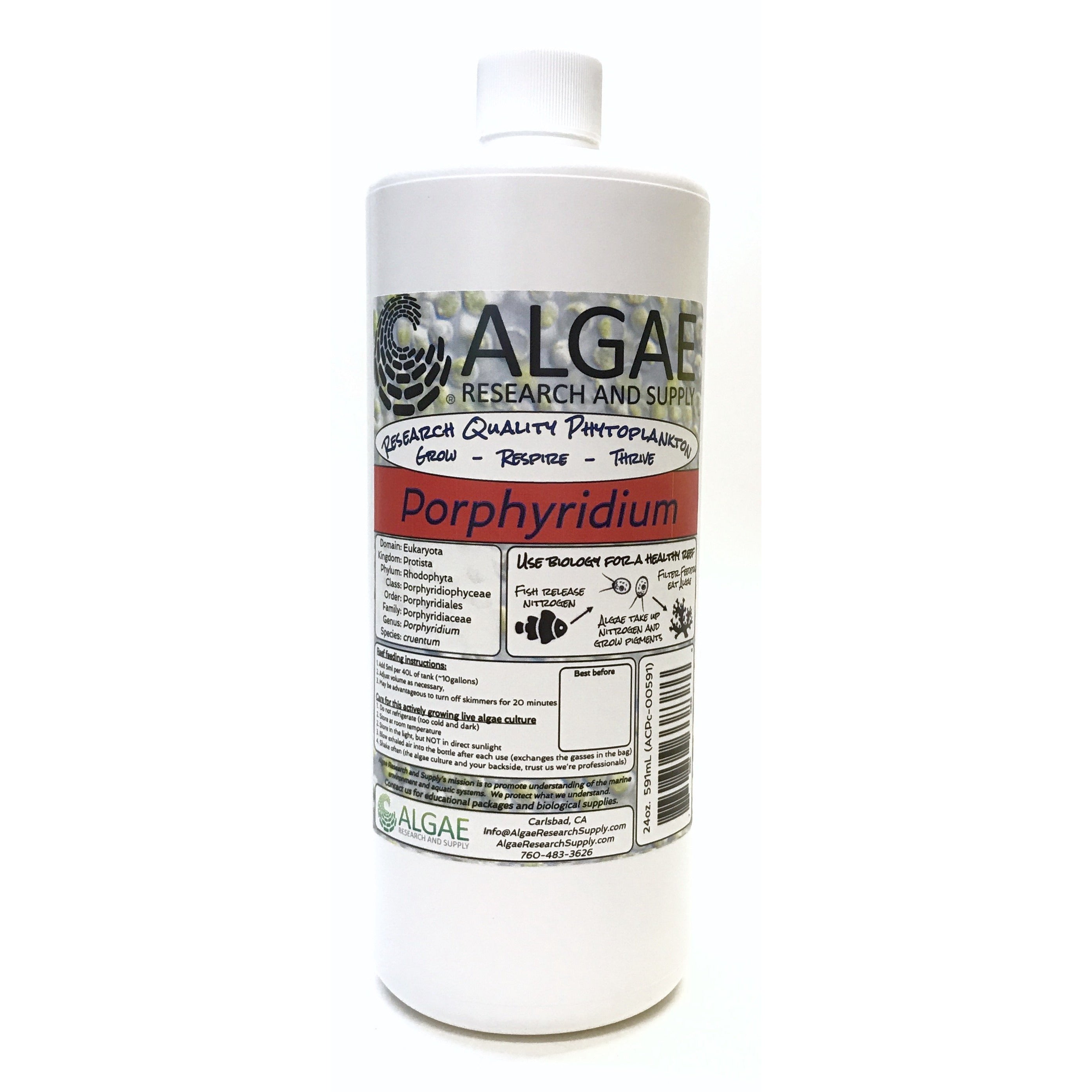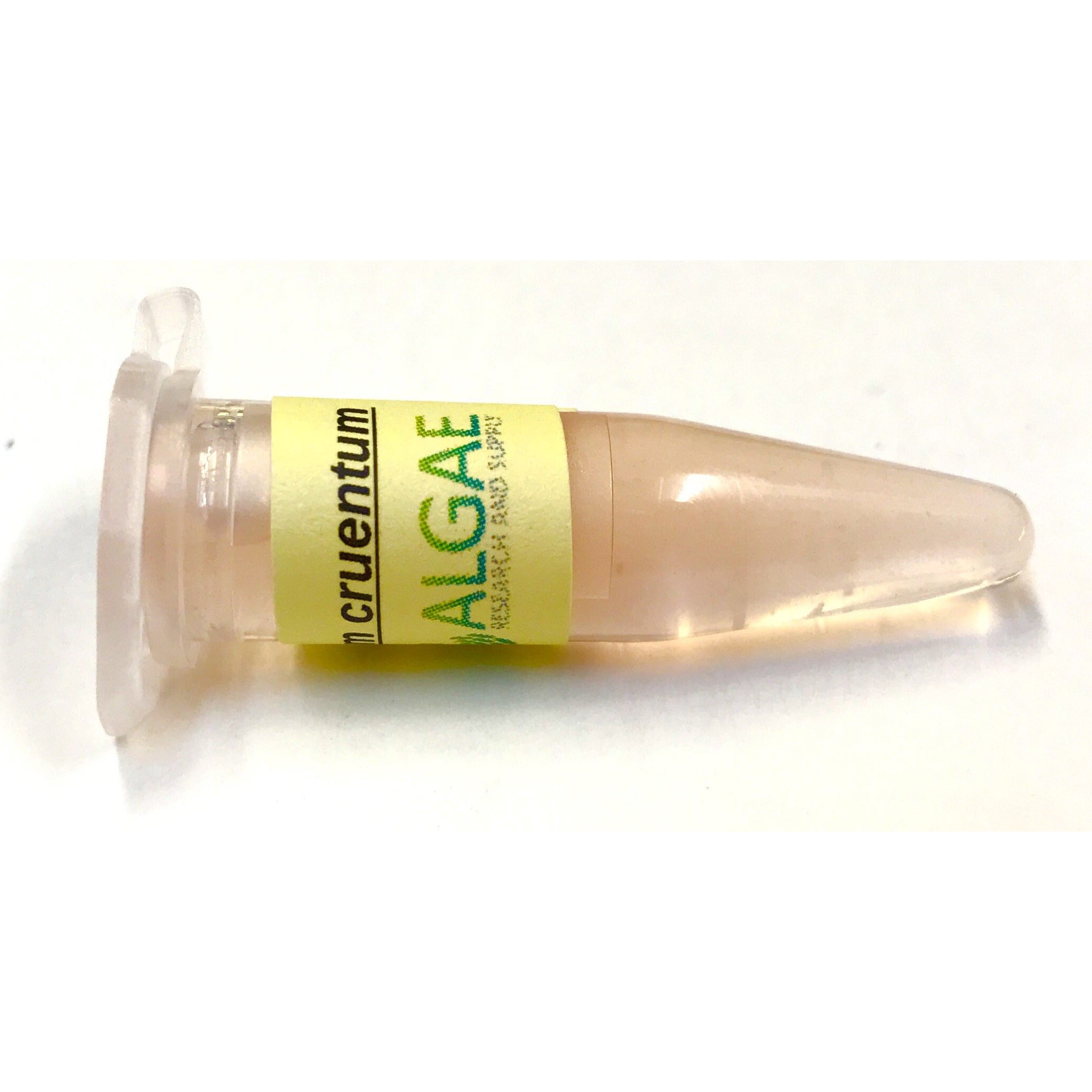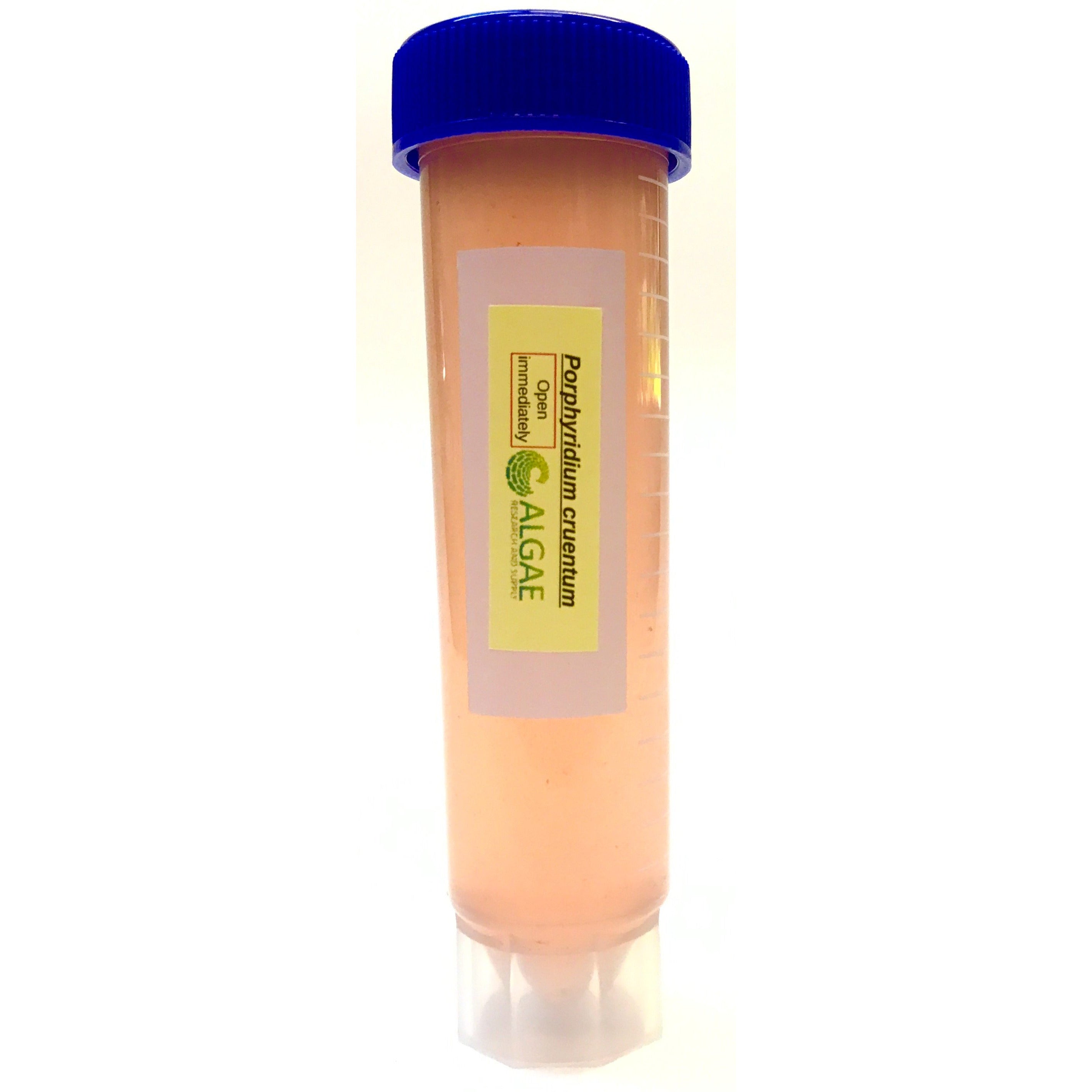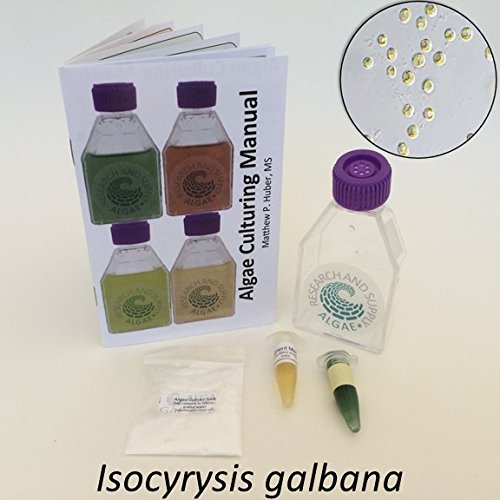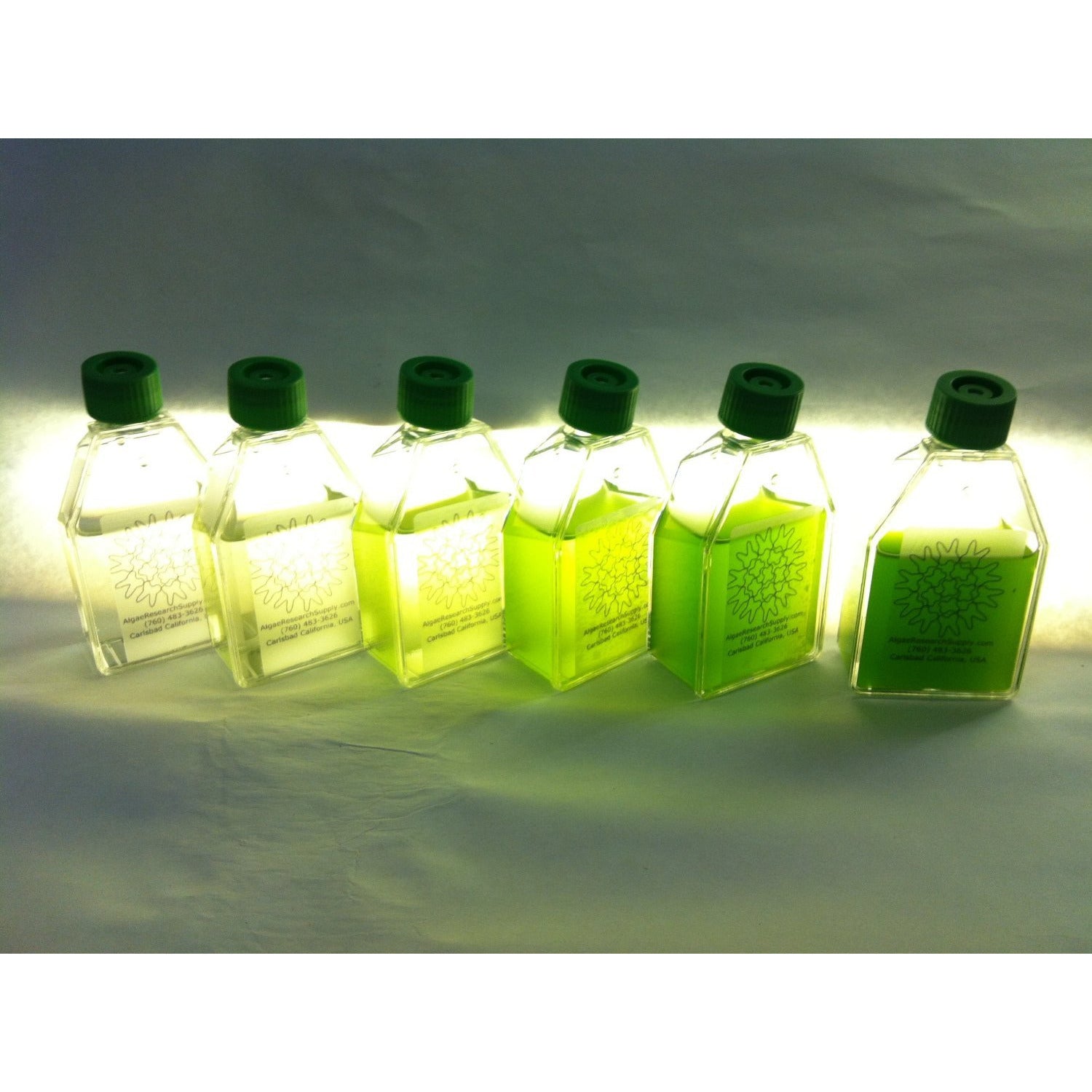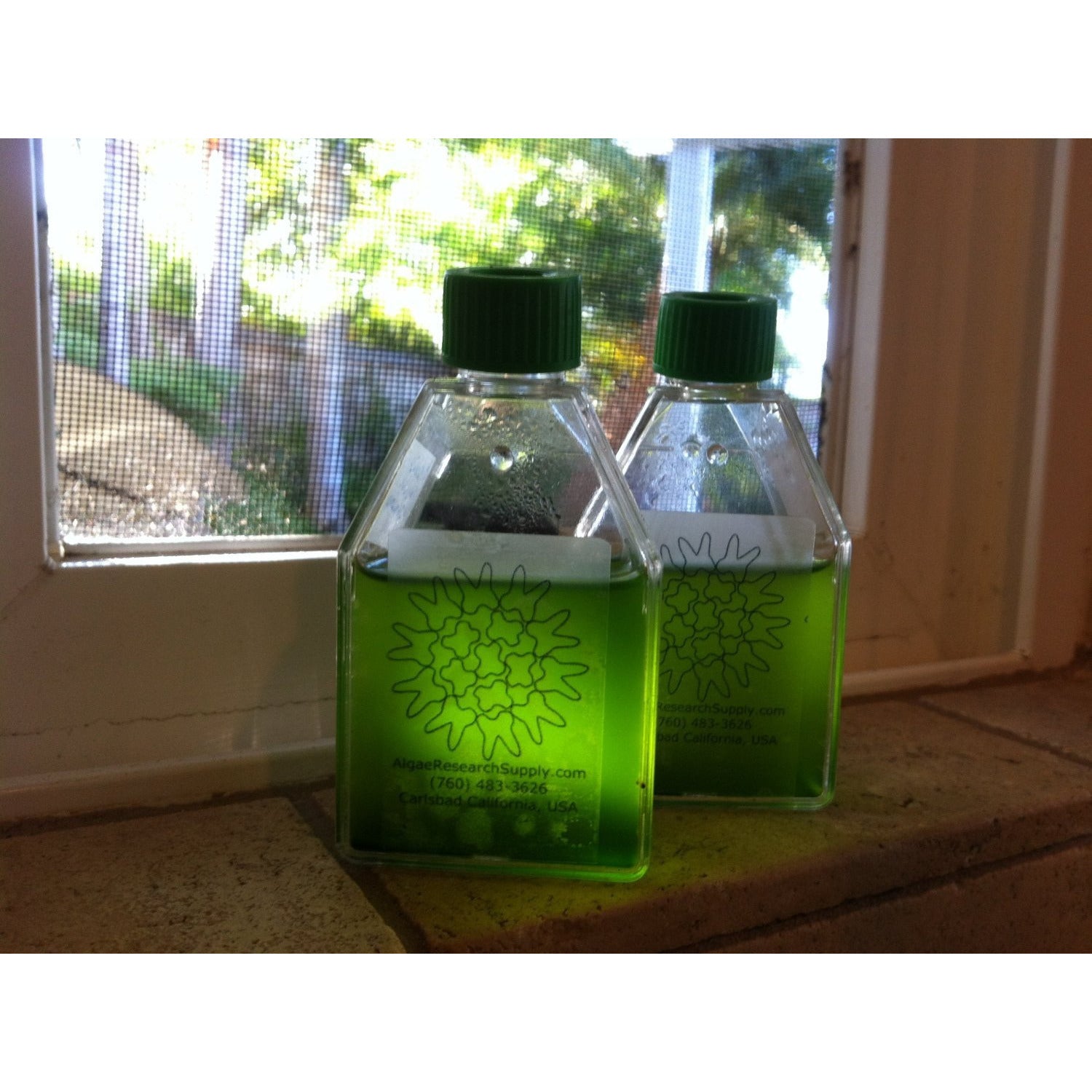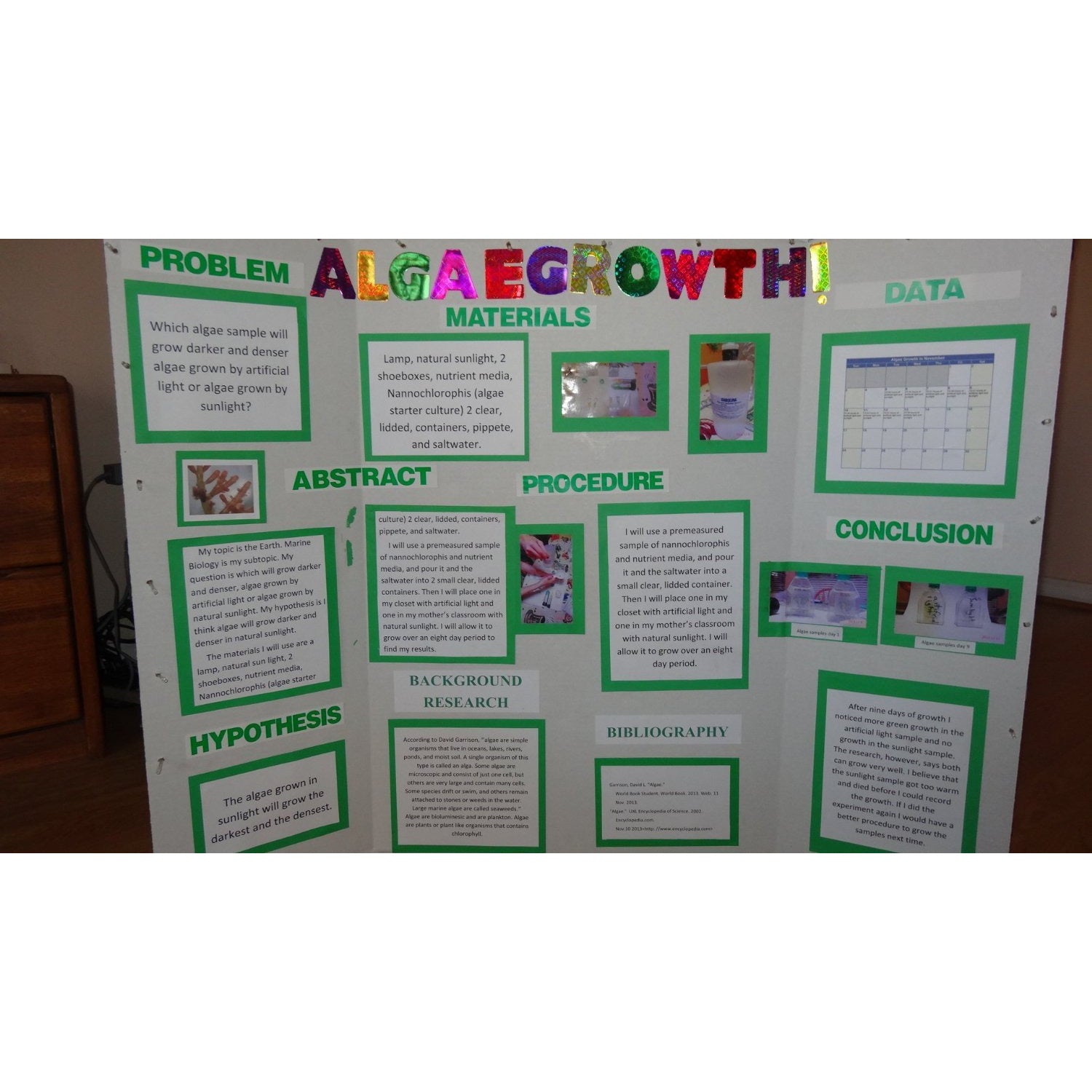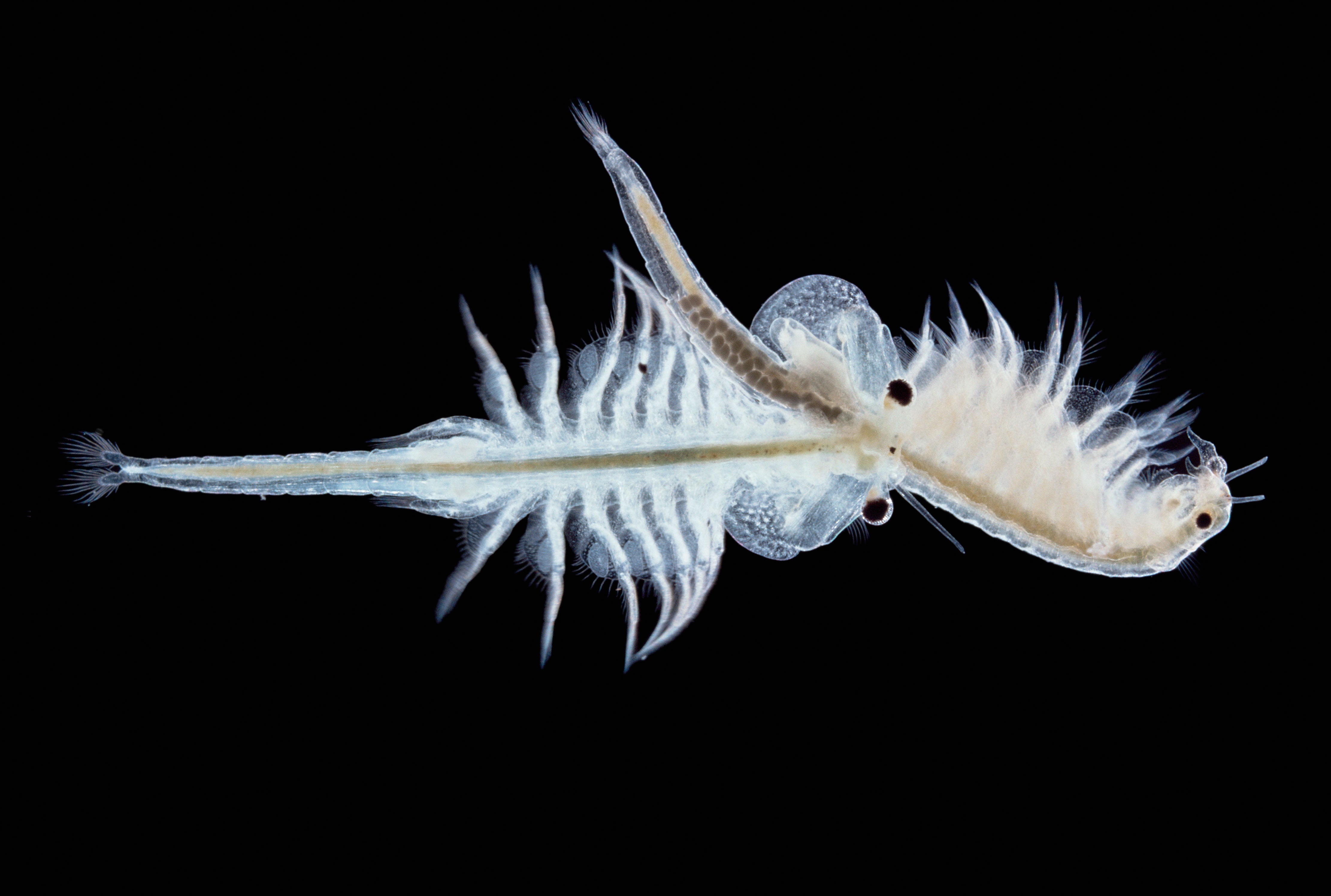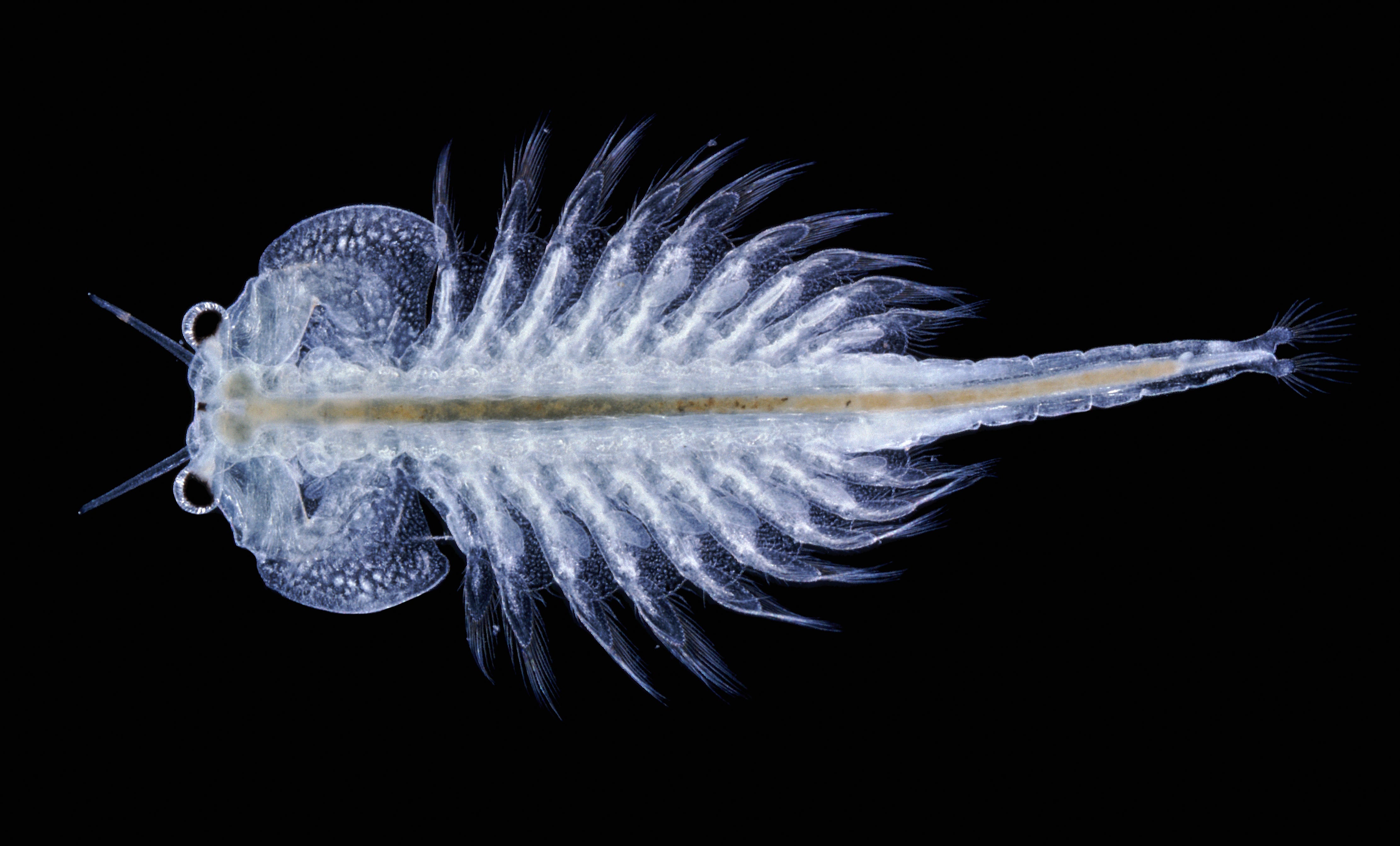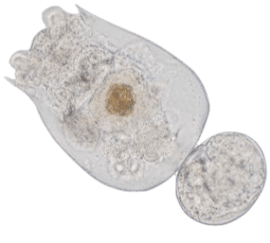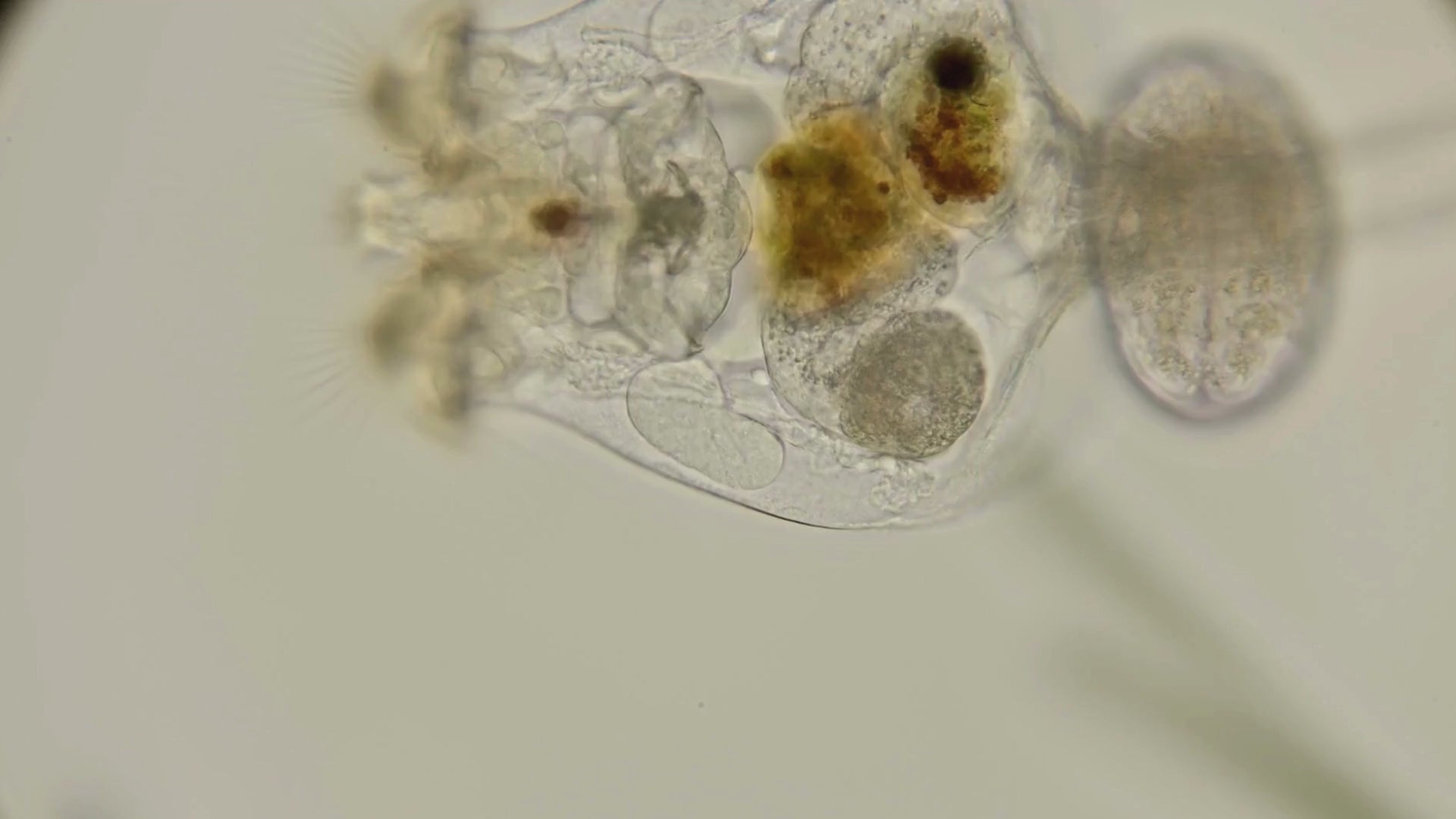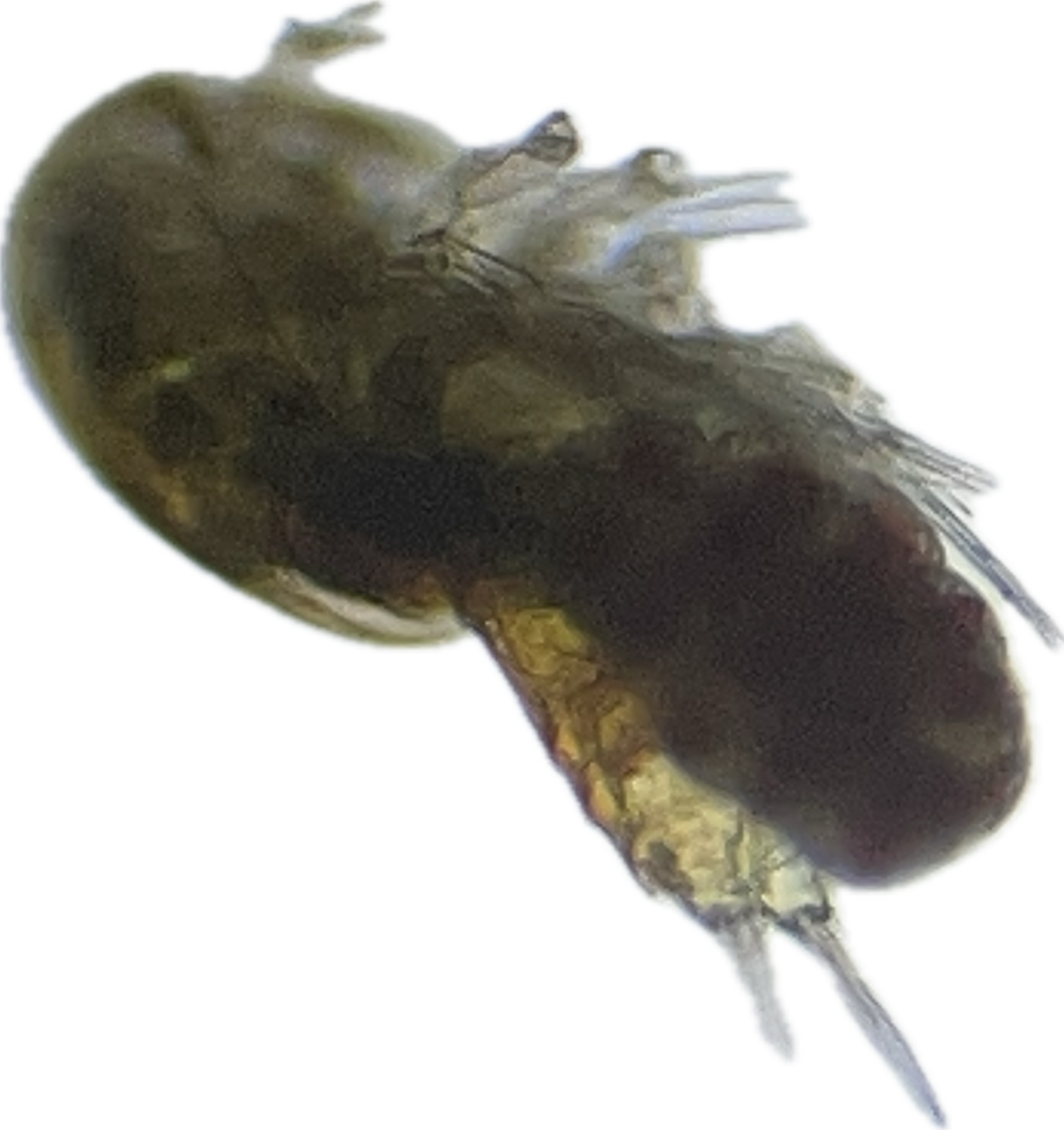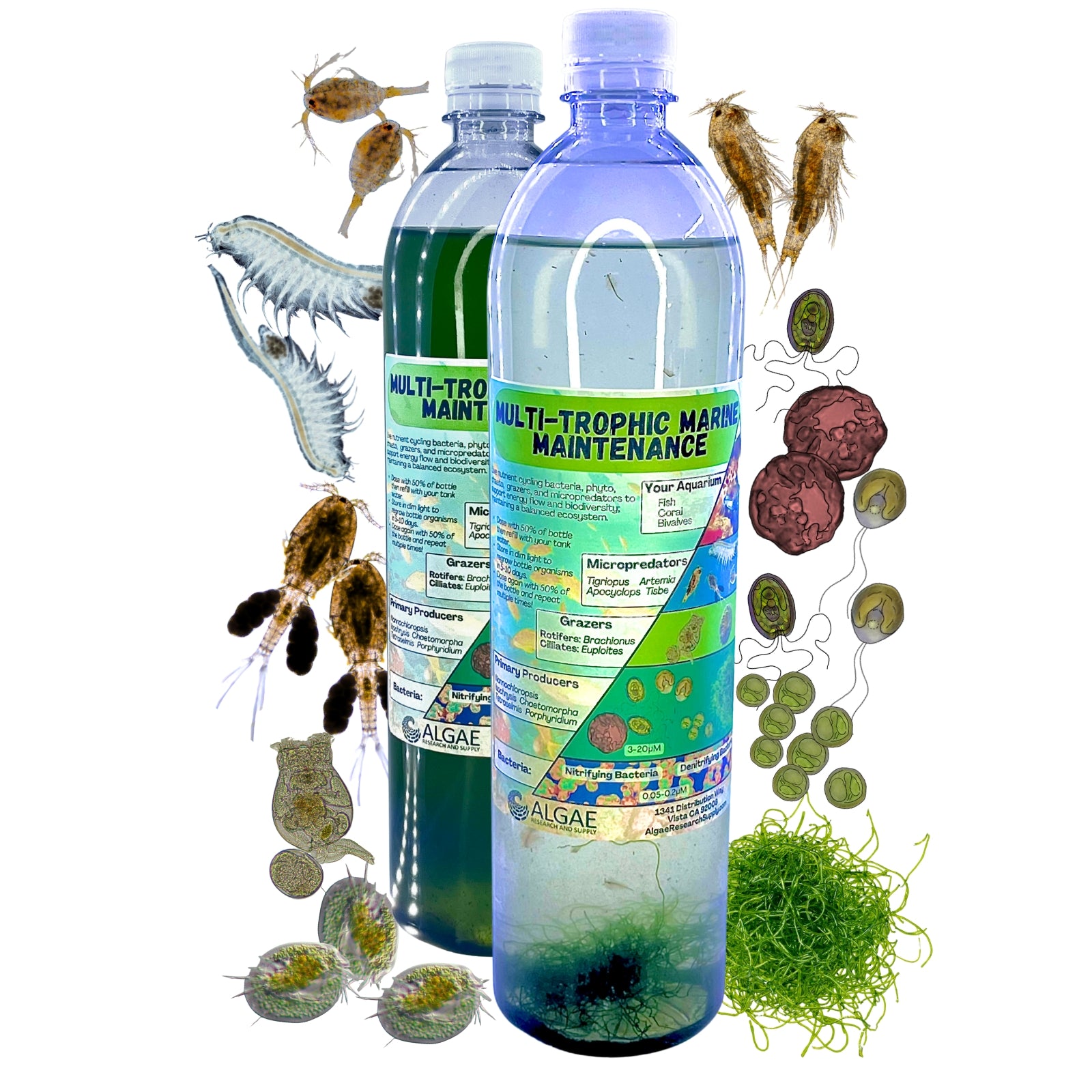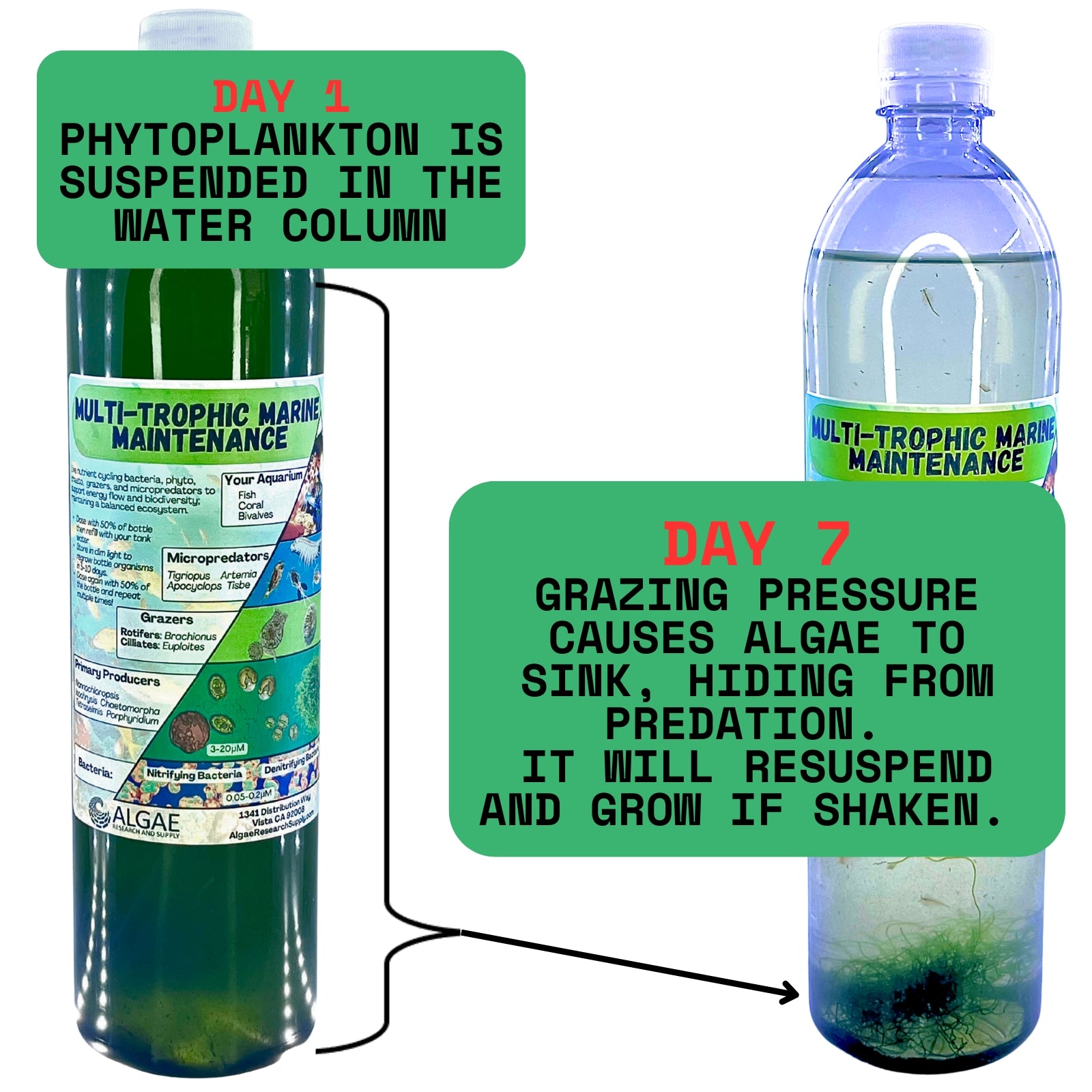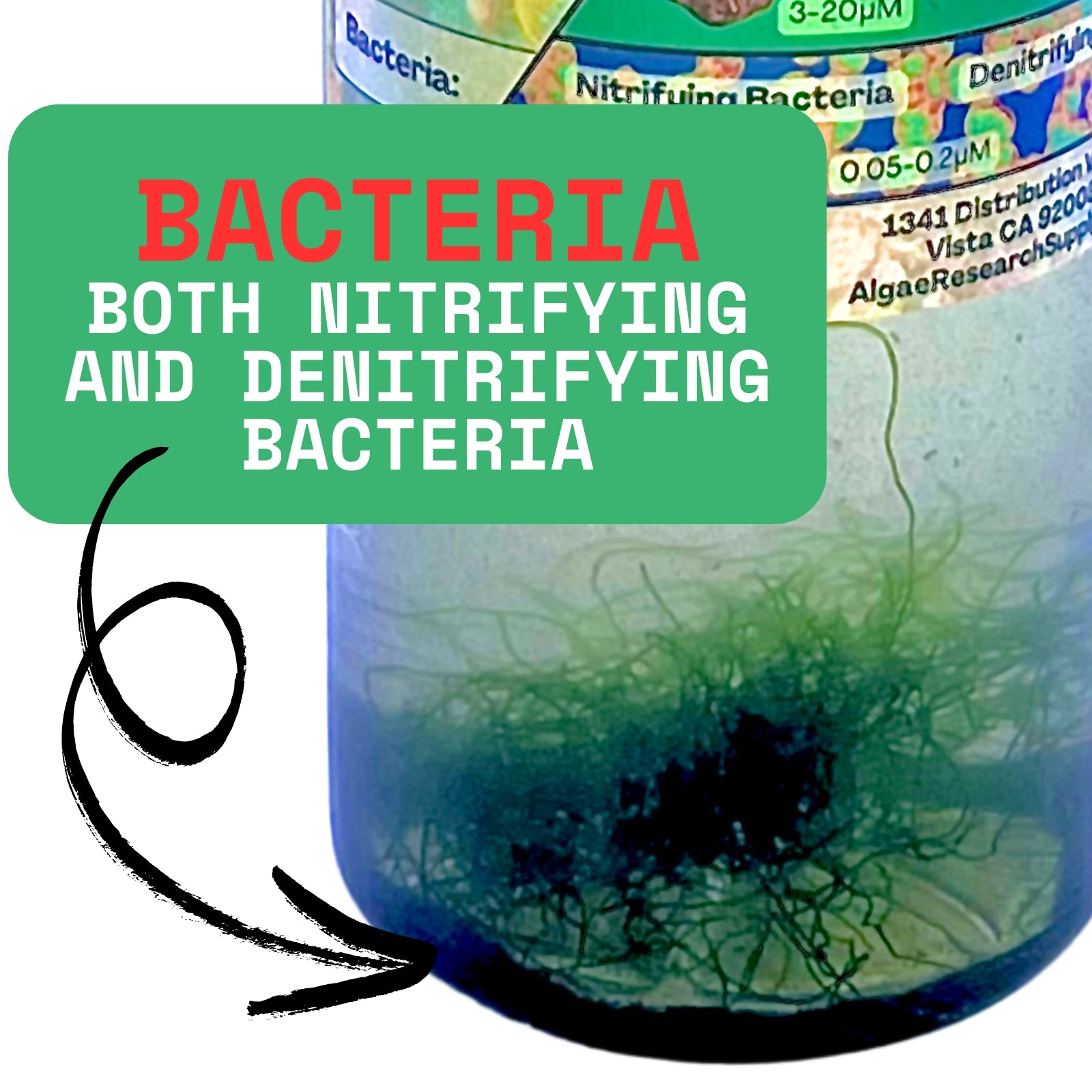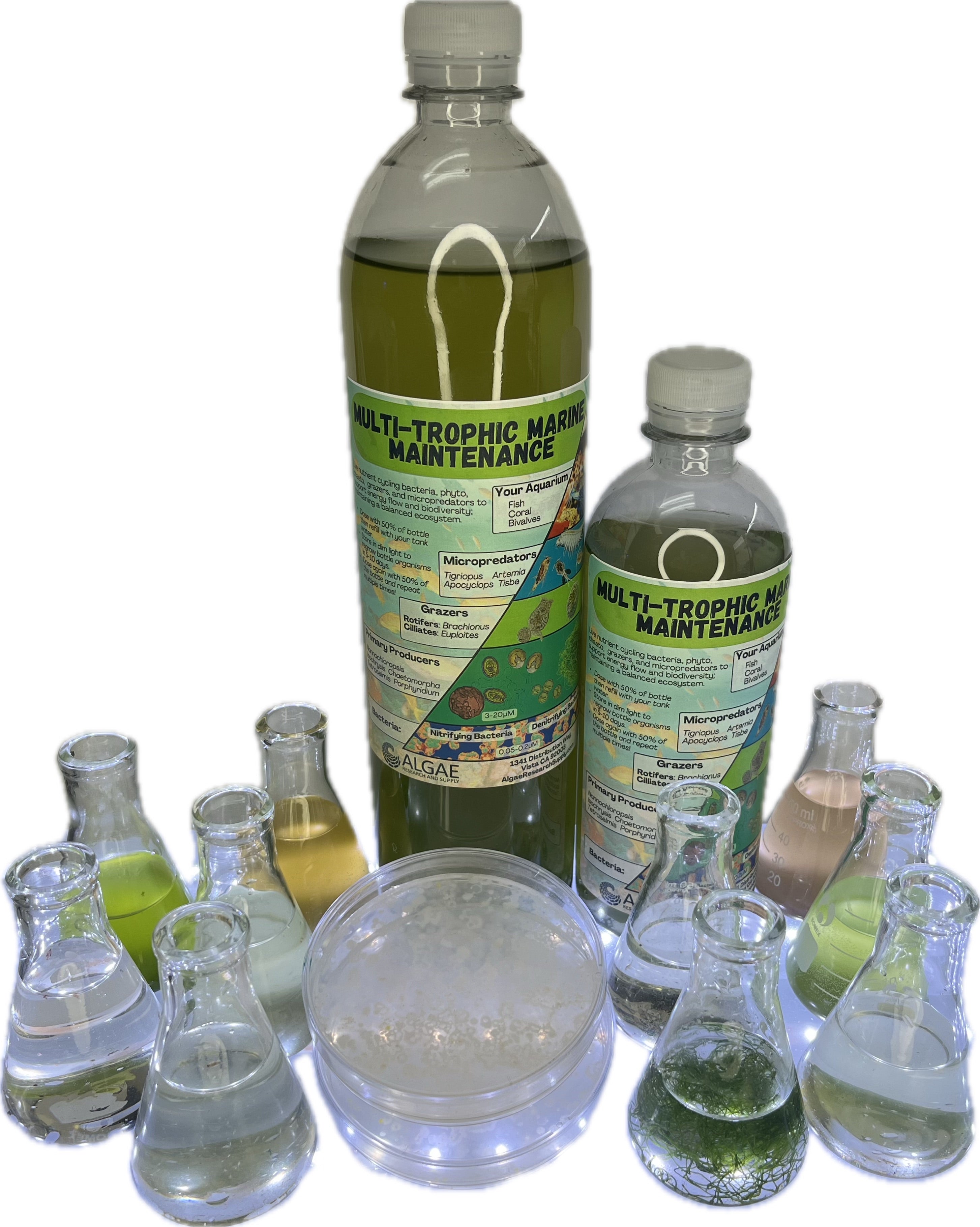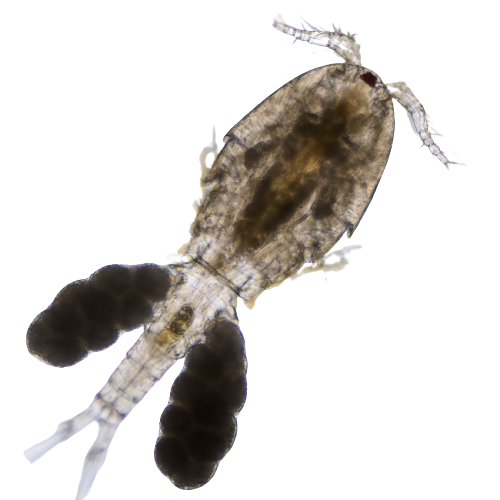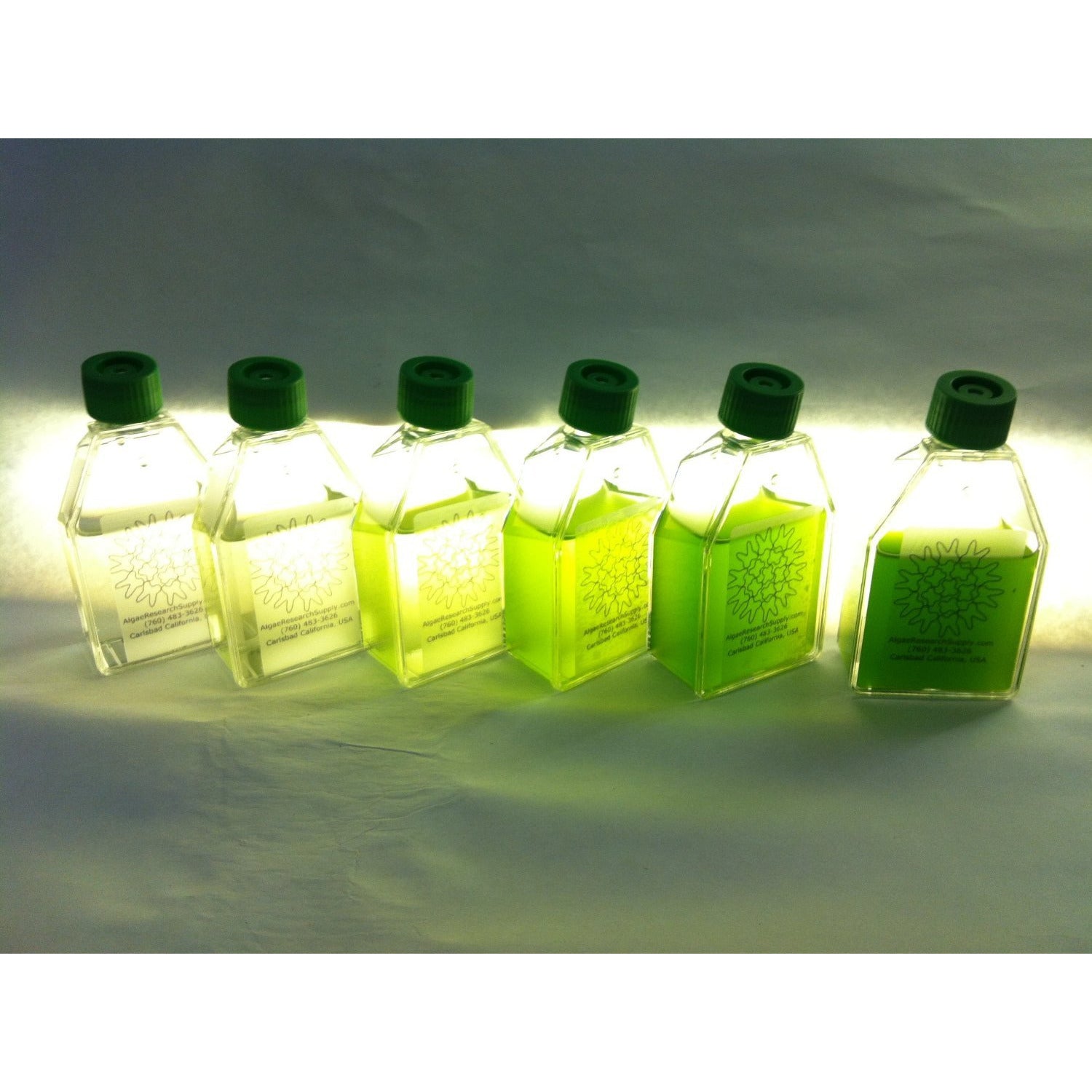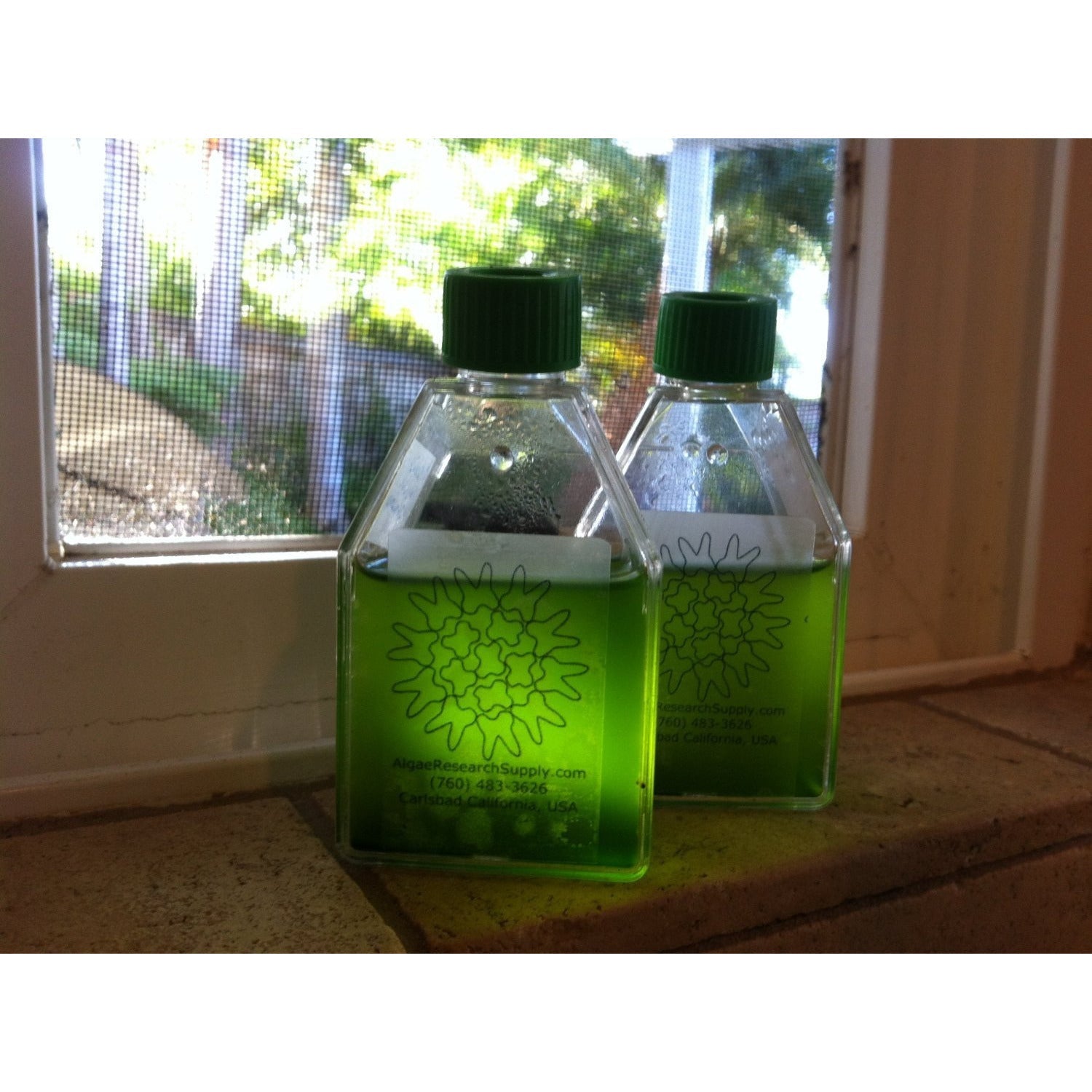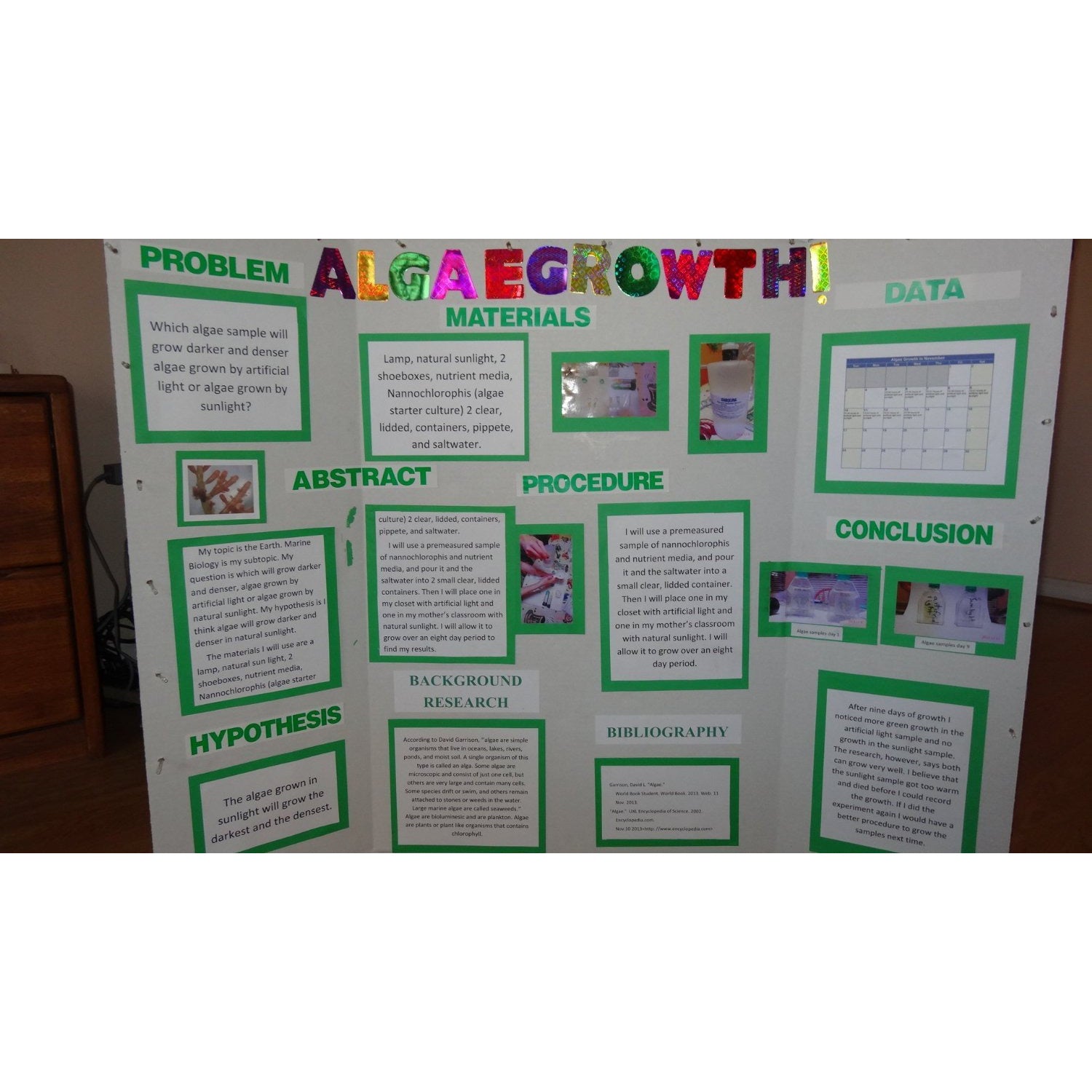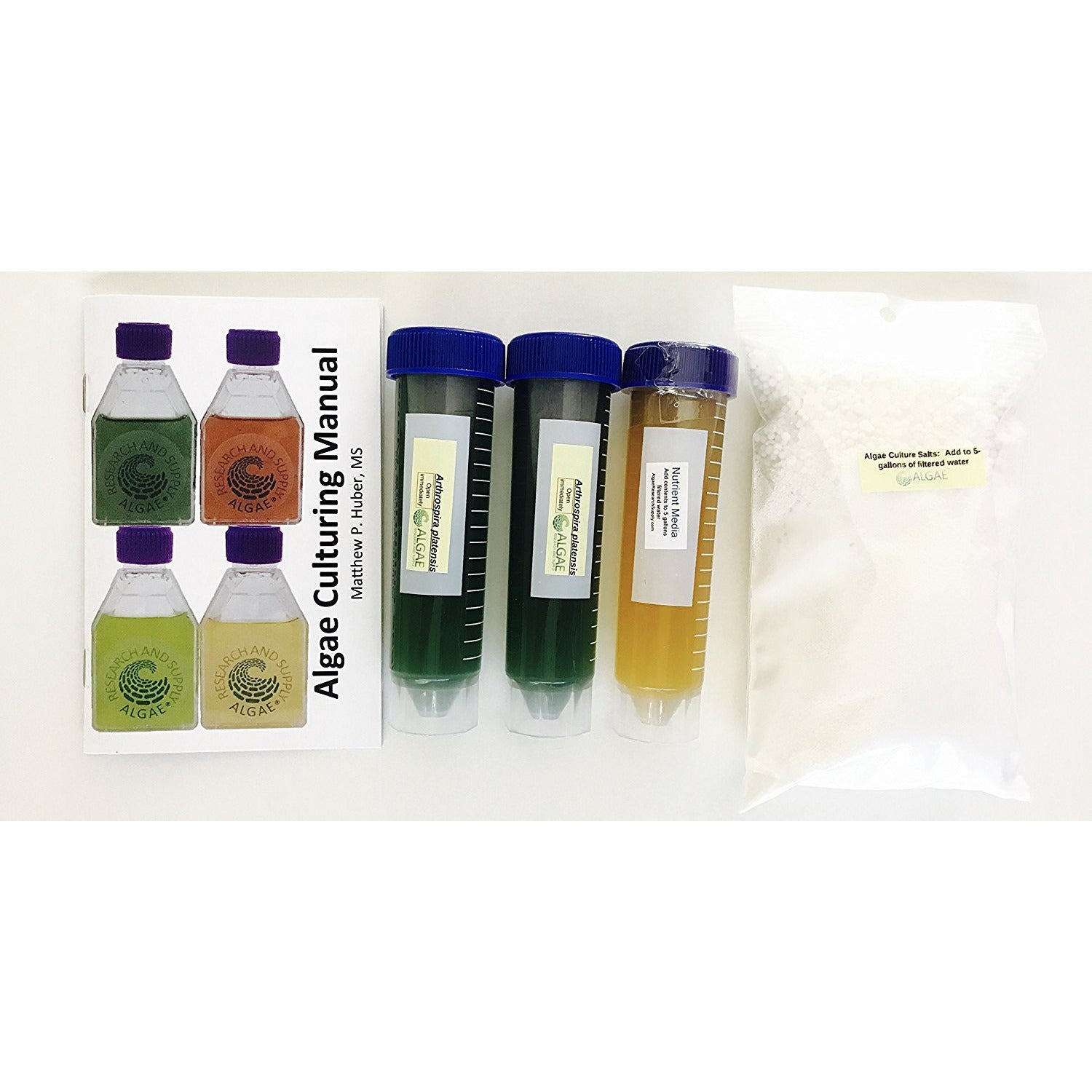Setting Up!
Here are the general things to consider when setting up your lab (kitchen table) to grow algae!
Below we talk about best "lab rats" that do their job in the classroom.
Planning The Location For Your Culture
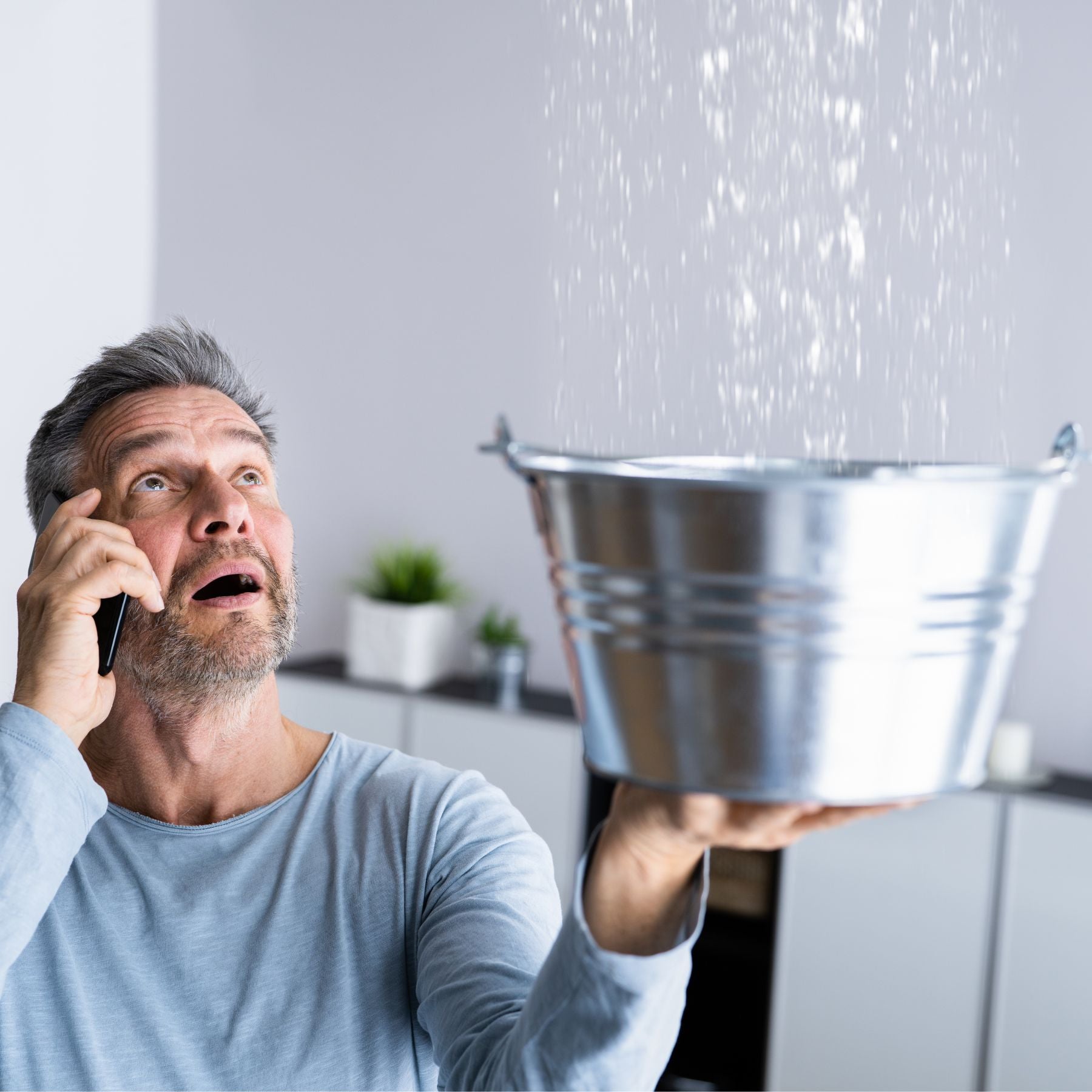
Leaks and Spills
You are going to have them. Think about these factors while choosing your growspace:
1. Cleanable surface
2. Where will spilled water go? Will it damage anything?
3. Can the cat, dog, of llama get at the cultures? (yes llamas, we have had llama related issues- its a thing)
4. Will you see it regularly? You will want to walk by it a few times a day to "give it a swirl" (algae like the attention)
5. Consider trays. In our lab we often use a cafeteria tray to keep projects organized, it makes them easy to move around together, and of course- contains the spill.
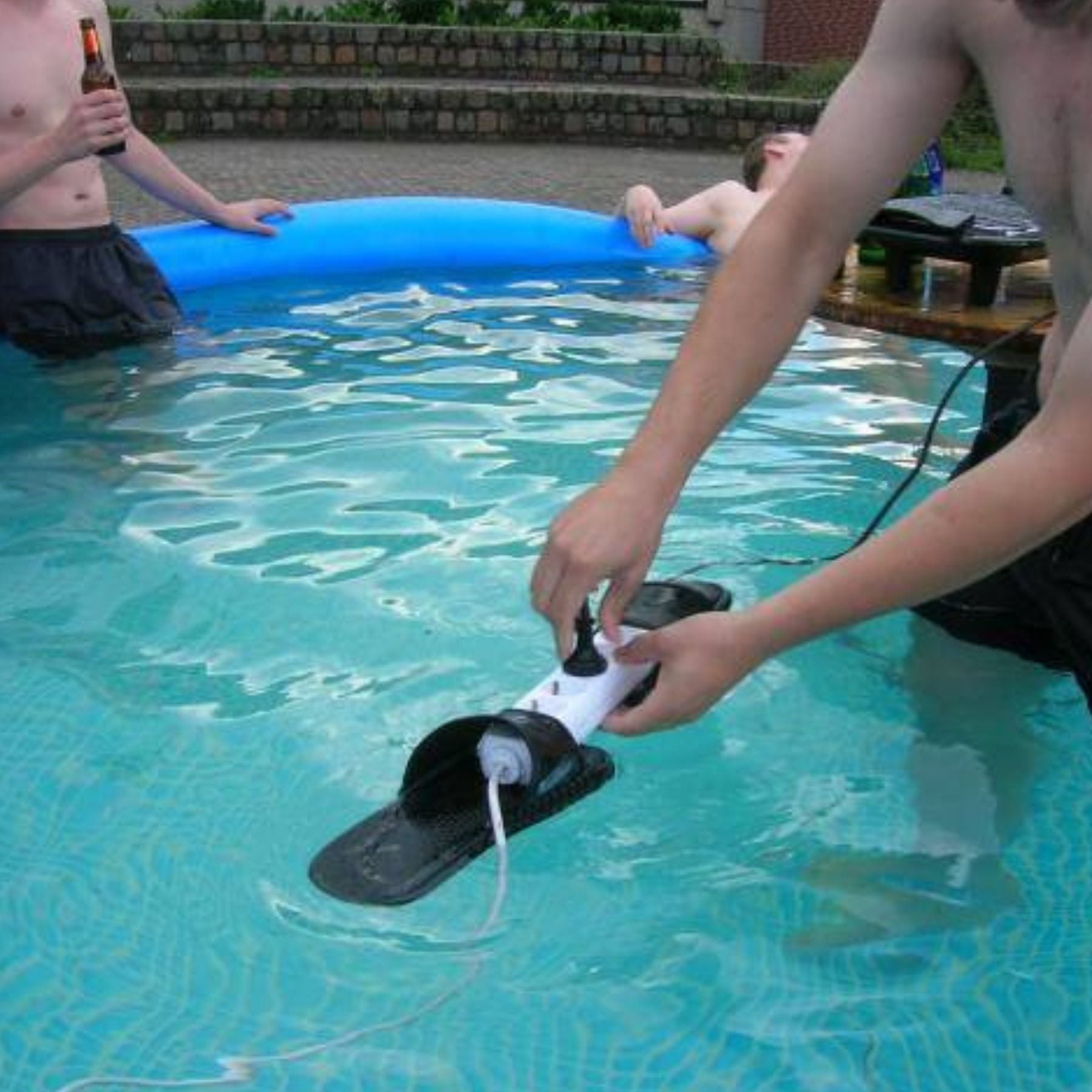
Electricity and Water
Getting shocked really sucks. Our fearless founder, Matthew, had an "experience "with a Van de Graaff generator while working at Monterey Peninsula college. It gave him a healthy respect for electricity.
These are suggestions, we are not electricians. If you think you are in a dangerous spot, consult a professional.
1. Get a GFI- Ground Fault Interrupt. This gadget shuts the power off when a short is detected. Its good if you are concerned at all that you may spill water.
2. Get a power strip. You will likely need to power a light, heater, air pump. This can add up to ~100W when they are all on at the same time. Pick your supples appropriately.
3. Organize your power cords so that in the case of a spill, the water does not run to an unprotected area.
Lighting
Lighting
Most algae are photosynthetic (for the weird-os look up mixotrophic or heterotrophic algae).
1. An LED bulb- they work well, place cultures 1-10cm from lamp.
2. A CFL bulb- They work well also, but put out a bit more heat than the LED, place 2-15cm from lamp.
3. LED or Fluorescent shop lights. We use both of these in our shop. You really don't need fancy grow lights (unless you want to show off to your friends).
4. An incandescent light: Ask your grandparents what an incandescent lamp is. For an incandescent lamp that is 60-100W, place the flasks 5-20cm away. They create a lot of heat and can overheat the culture and possibly melt your project or worse yet, start a fire.
5. Sunlight INSIDE of double or triple panes of glass. We do NOT recommend sunlight for most algae culture, it is too much light. Light comes in at ~2000uM Photons/m2s, but algae saturate around 100. Dim it down!
6. Direct sunlight. We do not recommend this unless the total volume of the culture is more than 40L, and the culture has a Secchi Disk Depth at least 150mm. Its too much light.
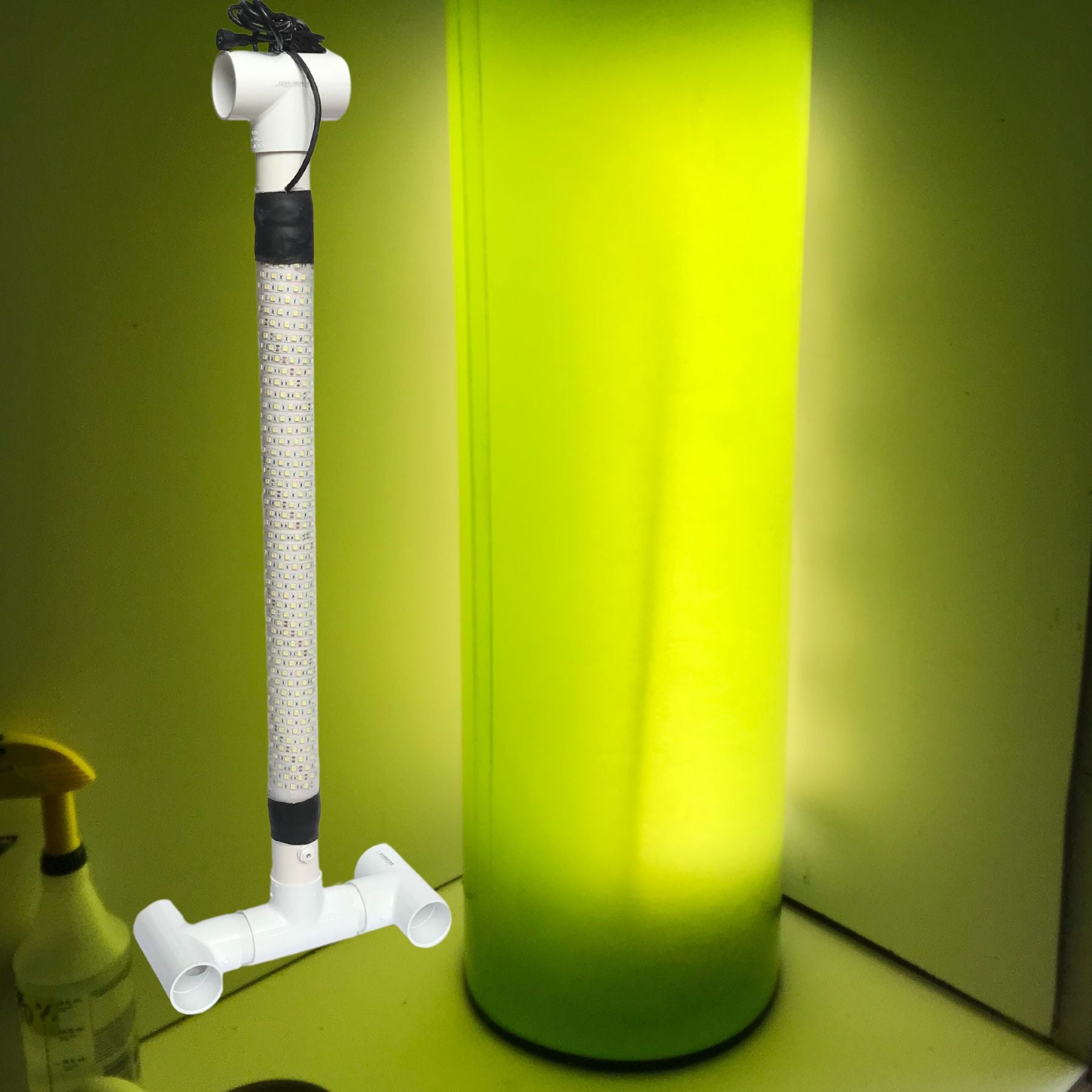
Algae Production Lights- Algae Light
The AlgaeLight from Algae Research Supply is a submersible, LED-based lighting system engineered for efficient microalgae cultivation in aquaculture settings. Operating at 24V DC, the unit includes options for a dimmer, electrical enclosure box, and grounding wire, ensuring safe and adjustable illumination tailored to various algal growth requirements.
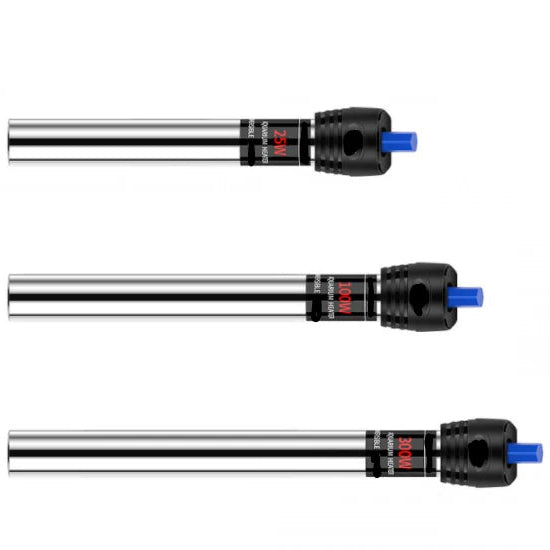
Do you need a heater?
If there is snow outside, or you live in Seattle (sorry Seattle friends), you may need to think about a heat source.
Direct heater:
Submersible heaters. These are good and can be purchased from us or from a pet shop. I like the models that you can adjust the temperature, gives a bit of freedom to do some experimentation. But I have had some of those fail (yes electrical shock) after 4-5 years of operation.
Indirect heaters:
Your light source gives off heat. It is often enough to keep things up. You can test with a thermometer.
On top of a heat source: (that is waterproof) Once, Matt suggested to a teacher to set her 500mL culture in her classroom on top of her computer because it gives off heat... he paused and then advised not to do that. However, atop a little refrigerator, or other heat source that is ~25C is often good. Use your best judgement. We suggest on top of our benchtop algae lights, as they give off a little heat.
Indirect heat by adding a cover:
Using a 10-gallon fish tank as an incubator works very well. A single LED light can increase the the temperature for a few flasks by 5-10C, if covered! Be fire safe!!!
WHICH STRAINS ARE BEST FOR FEEDING TO AQUARIUMS?
Nannochloropsis
Reduces nitrates and phosphates by uptaking excess nutrients, helping prevent nuisance algae.
Feeds zooplankton and filter feeders like copepods, rotifers, clams, and sponges.
Enhances coral health with EPA, pigments, and antioxidants
Stabilizes pH and oxygen levels through photosynthesis, good for high bioload tanks.
Boosts microbial diversity by supporting the base of the reef food web and ecosystem resilience.
Isochrysis
High in DHA, essential for healthy development of larval fish and invertebrates.
Ideal food for bivalves such as clams, oysters, and scallops in reef tanks.
Stimulates zooplankton populations including rotifers and copepods.
Easily digested thanks to its small cell size (~5 microns) and soft cell walls.
Enhances spawning success and early-stage growth in marine organisms.
Tetraselmis
Balanced nutrition with both EPA and DHA, supporting overall marine life health.
Motile cells stimulate natural feeding behaviors in filter feeders and zooplankton.
Supports copepod and rotifer cultures for a thriving reef food web.
Improves water quality by uptaking excess nutrients like nitrates and phosphates.
Enhances coral vitality with pigments and antioxidants that promote resilience.
Zooplankton
Copepods (e.g., Tigriopus, Apocyclops) Fuel microfauna populations that graze on detritus and cycle nutrients within refugia.
Rotifers (Brachionus) Provide a stable planktonic food source that bridges energy from microalgae to corals and fish larvae.
Walking ciliates (Euplotes spp.) Scavenge biofilms and organic debris, helping maintain clean surfaces and microbial balance.
Brine shrimp (Artemia) Act as live enrichment feeders, supporting natural foraging behavior in fish and preventing leftover decay.
Reef Aquarium
Algae Research Supply: Algae Culture Kit for Nannochloropsis
Algae Research Supply: Algae Culture Kit for Isochrysis galbana
Multi-Trophic Marine Maintenance
Algae Research Supply: Algae Culture Kit for Tetraselmis Chuii



